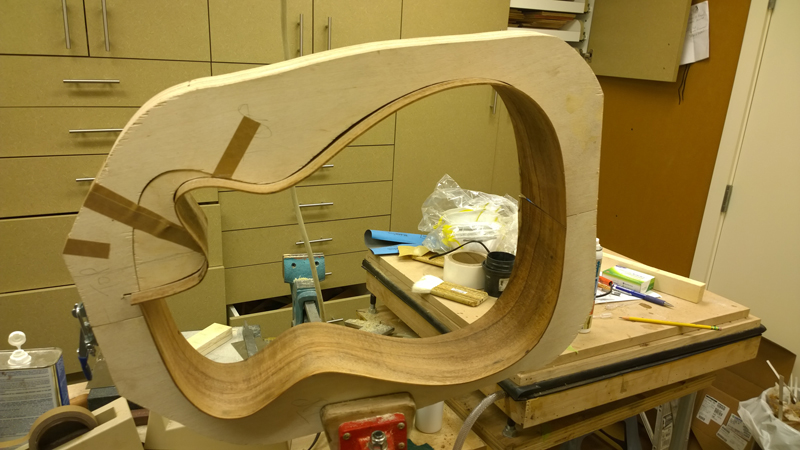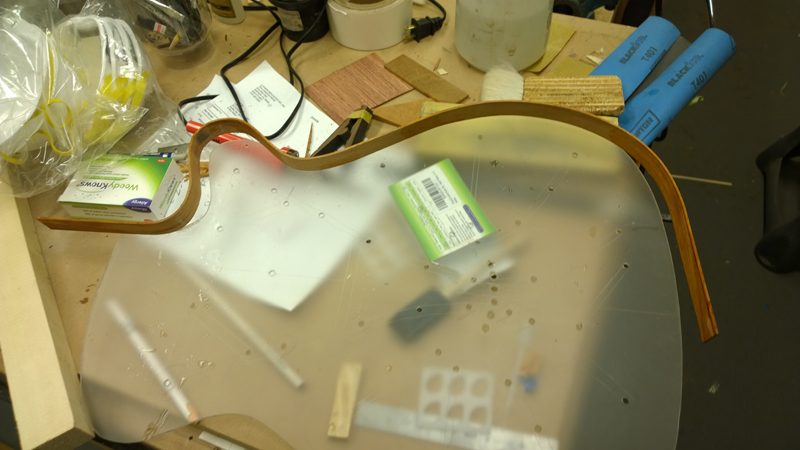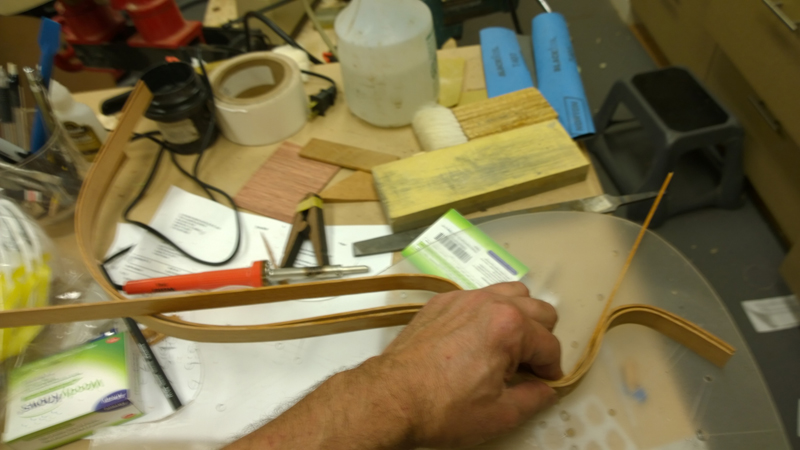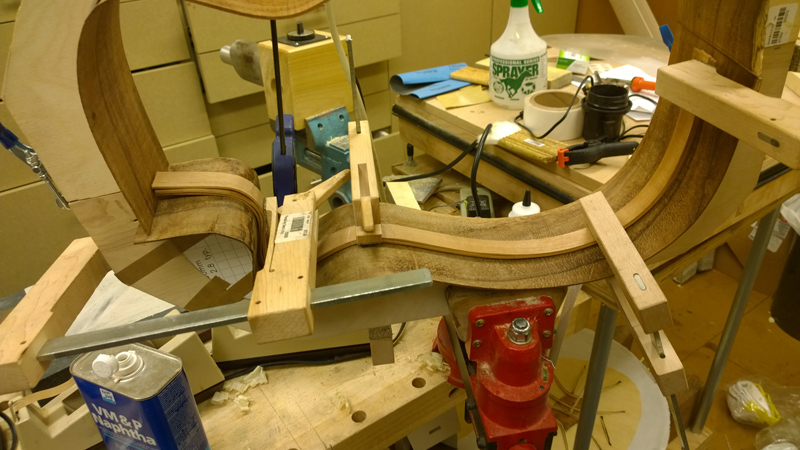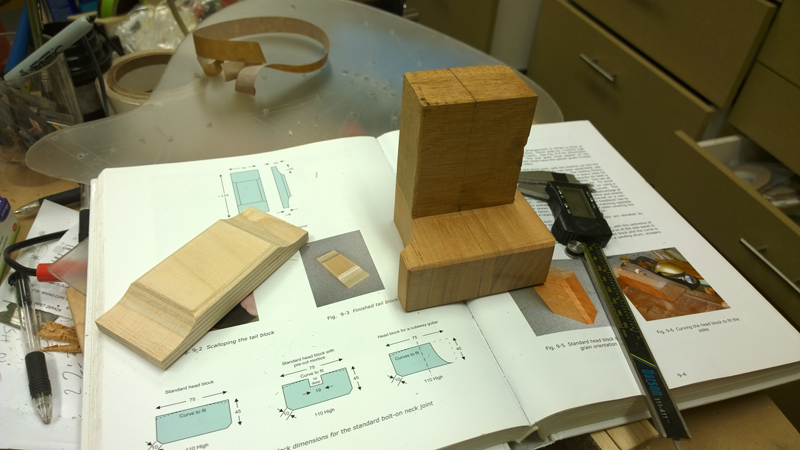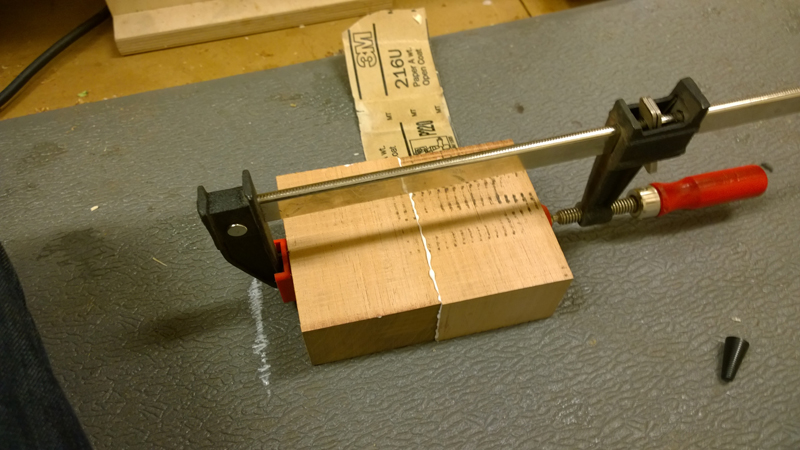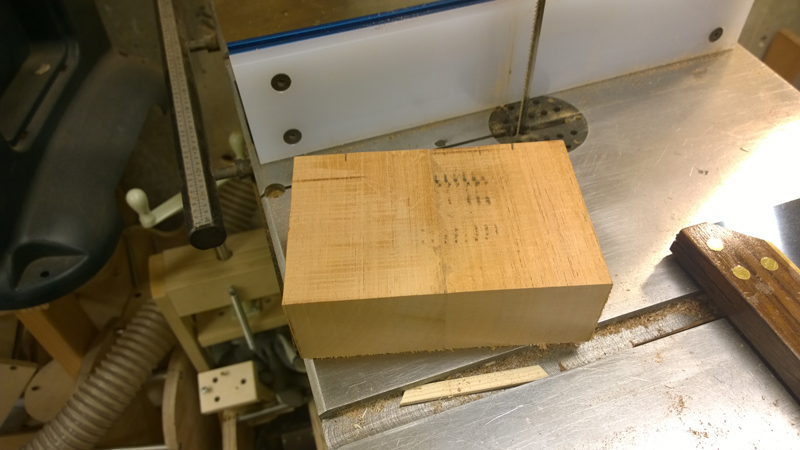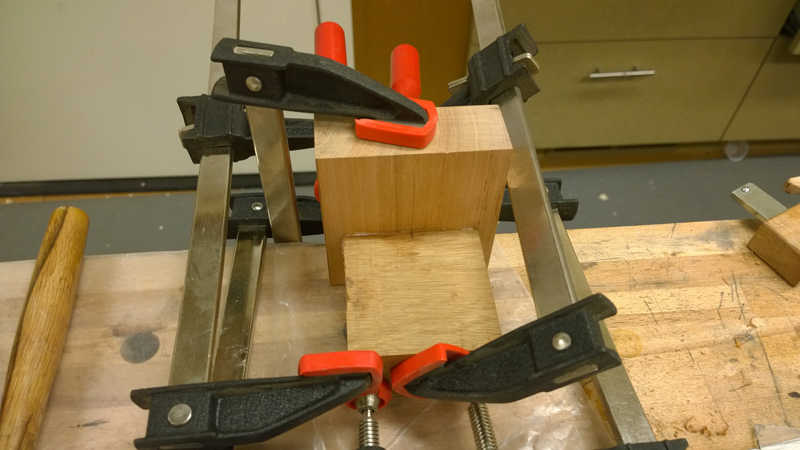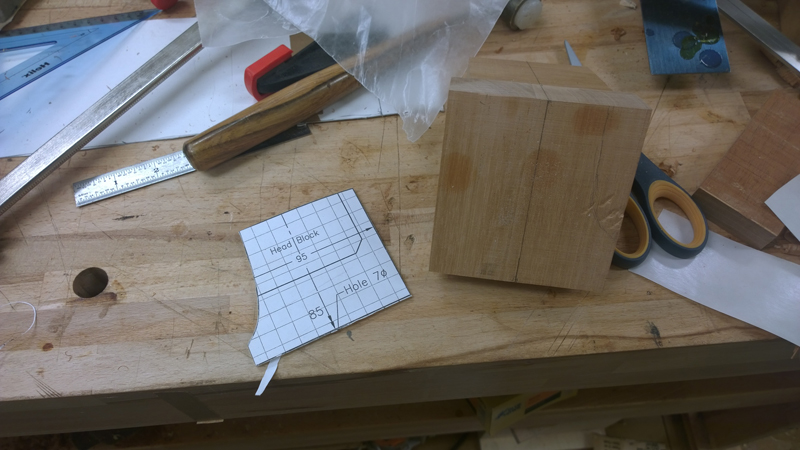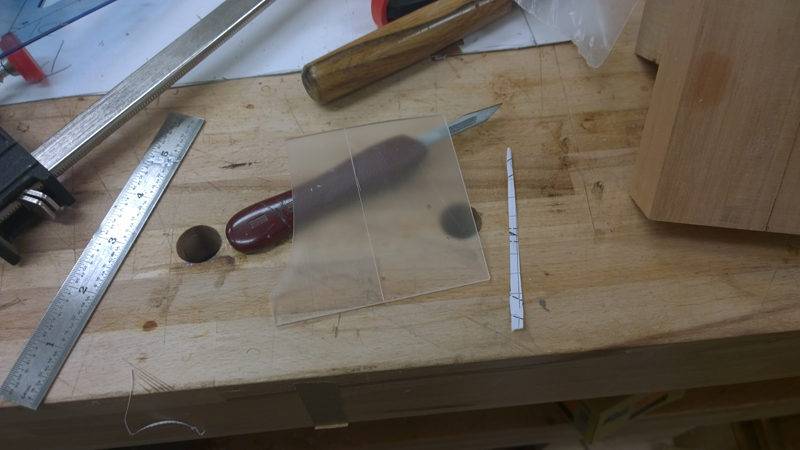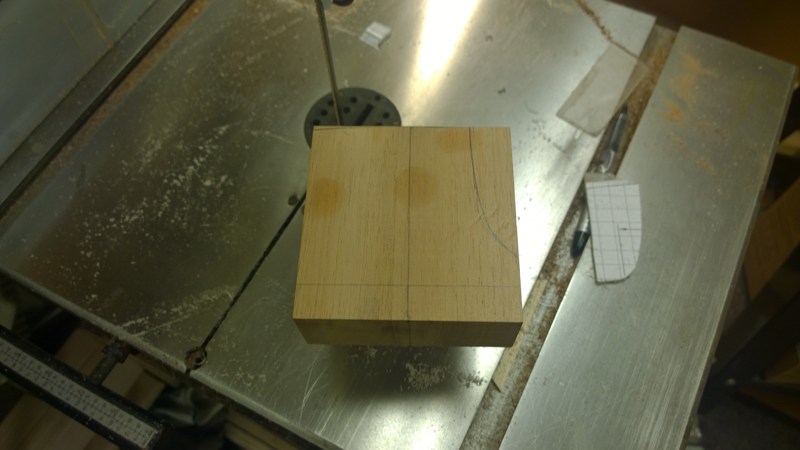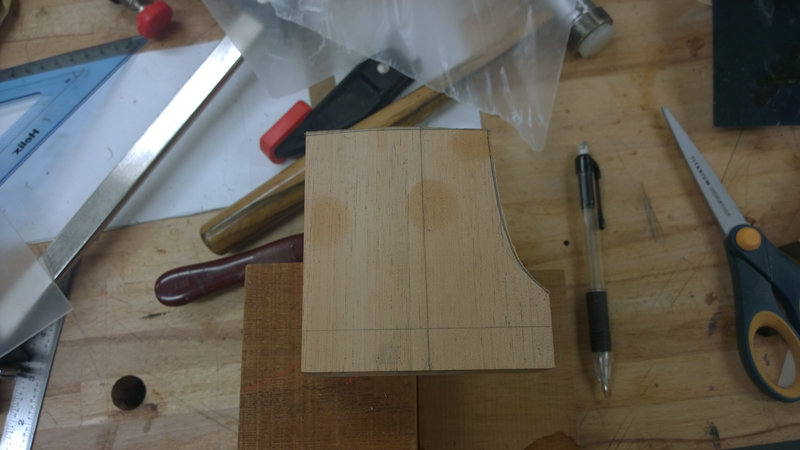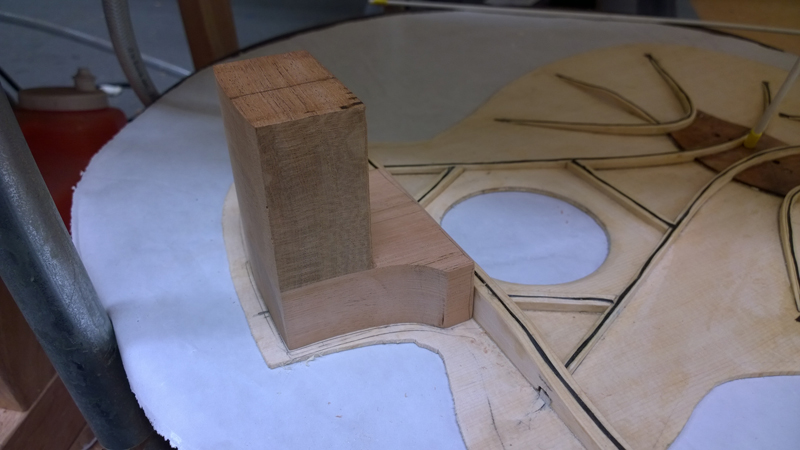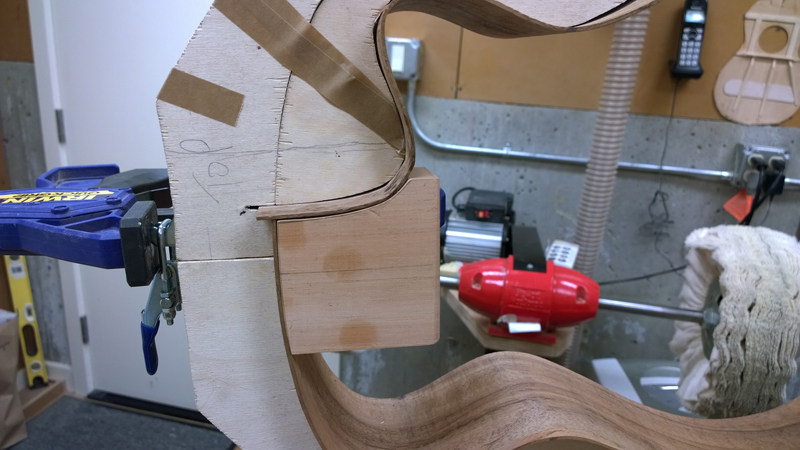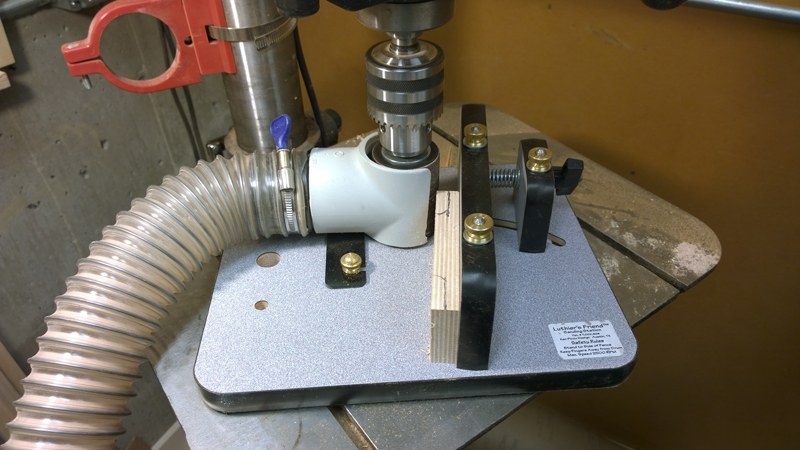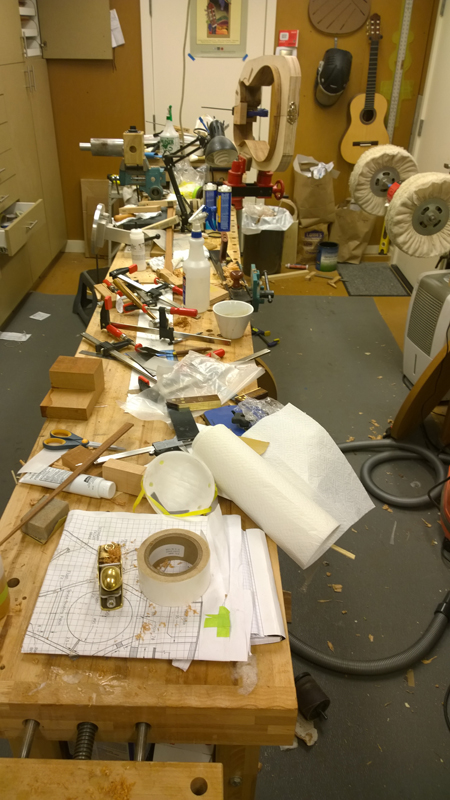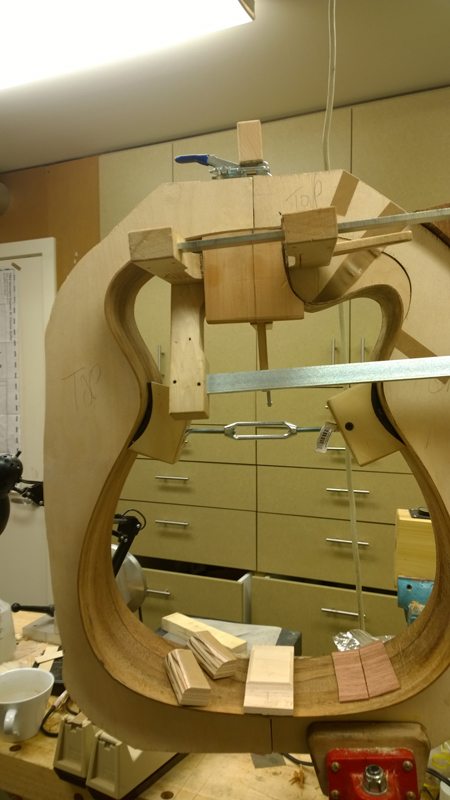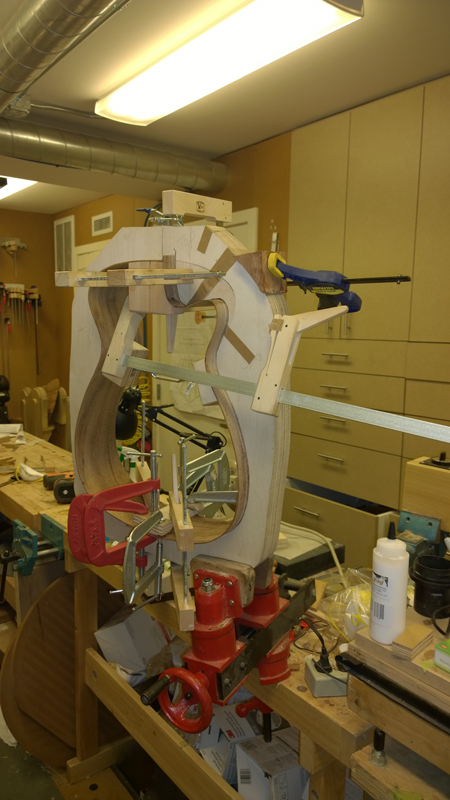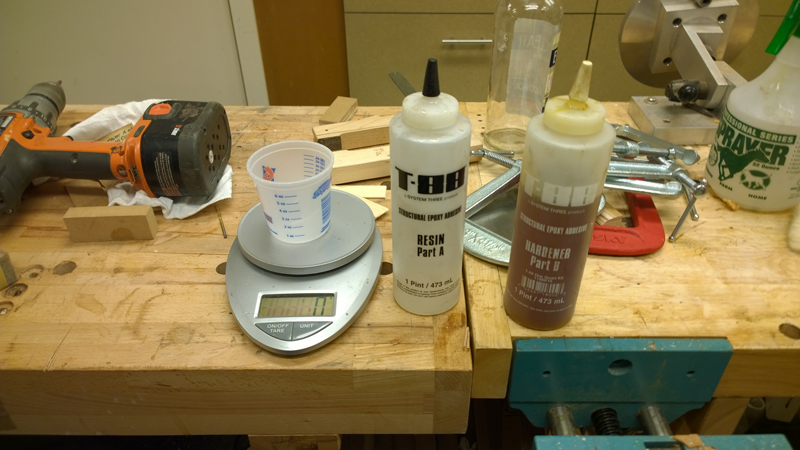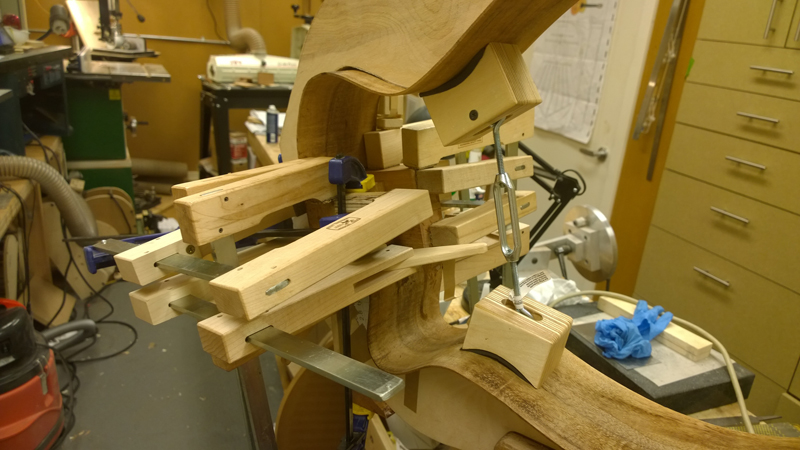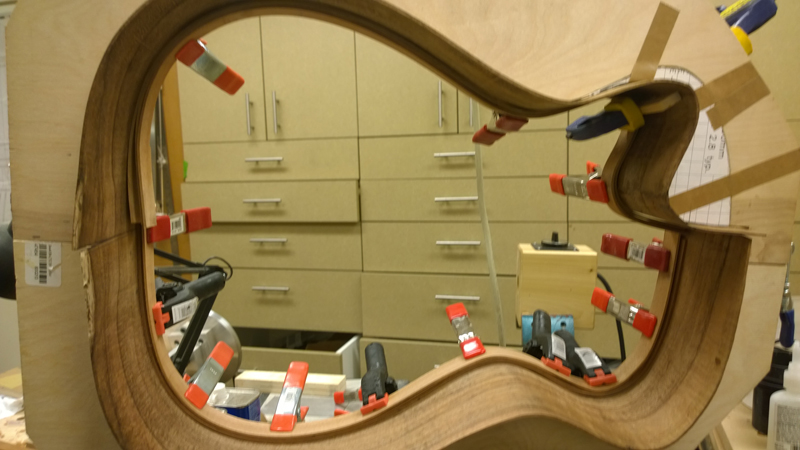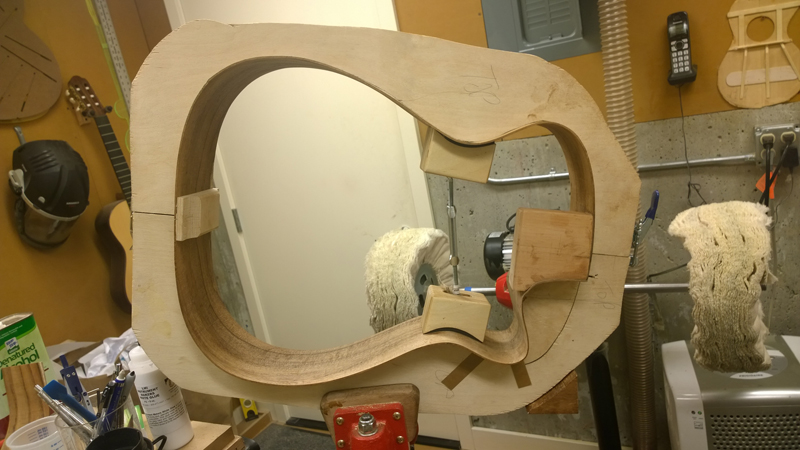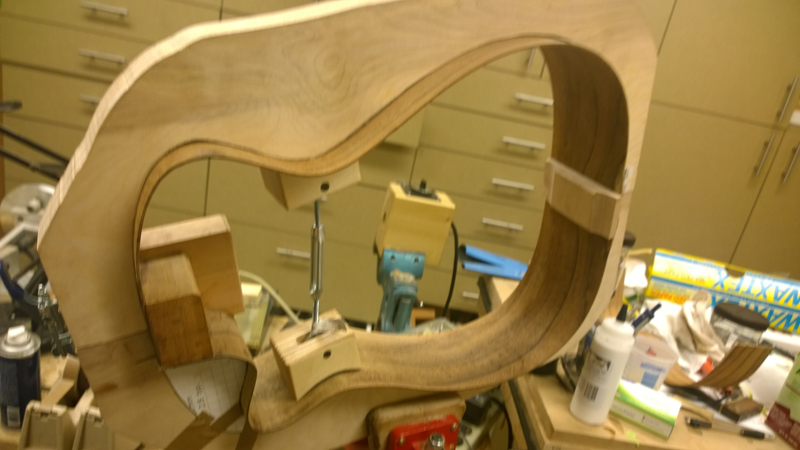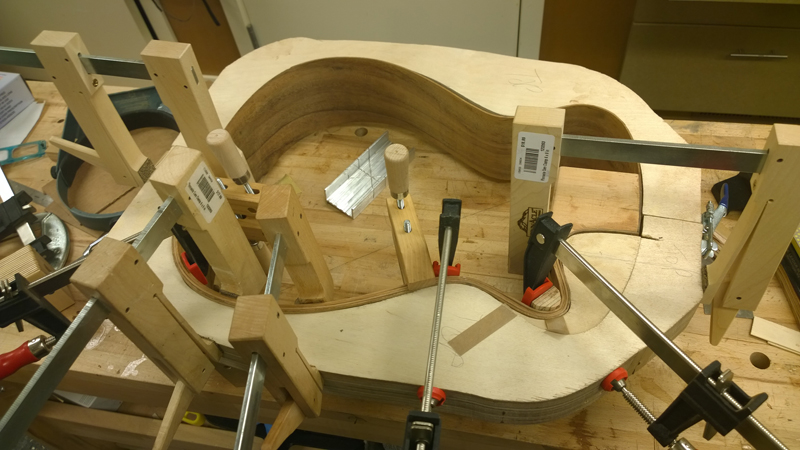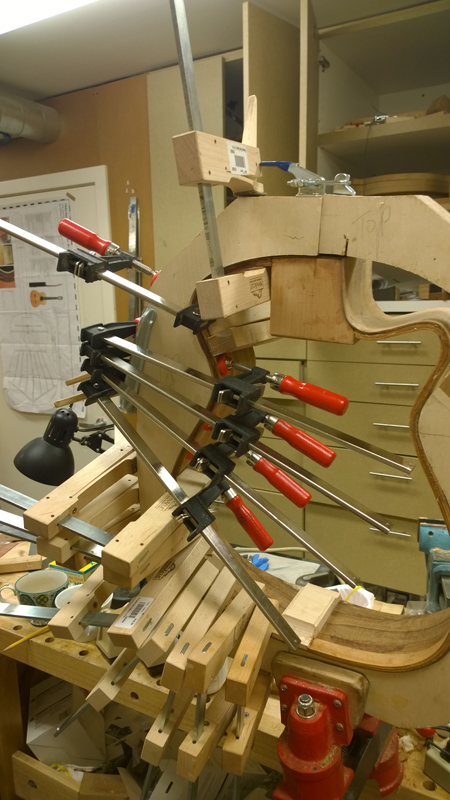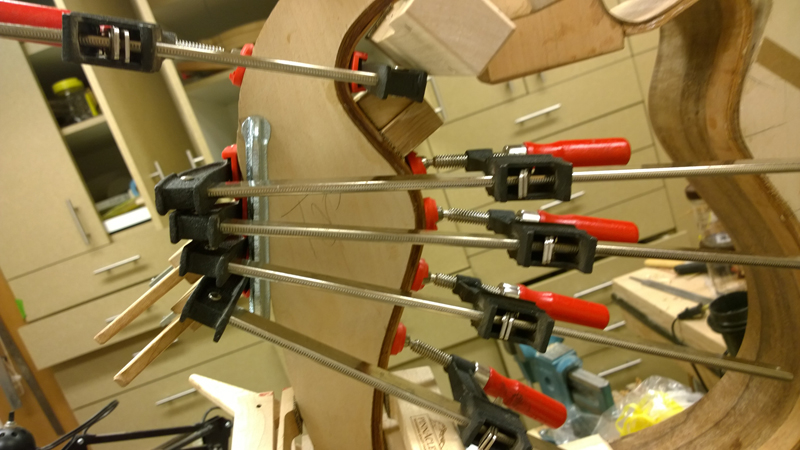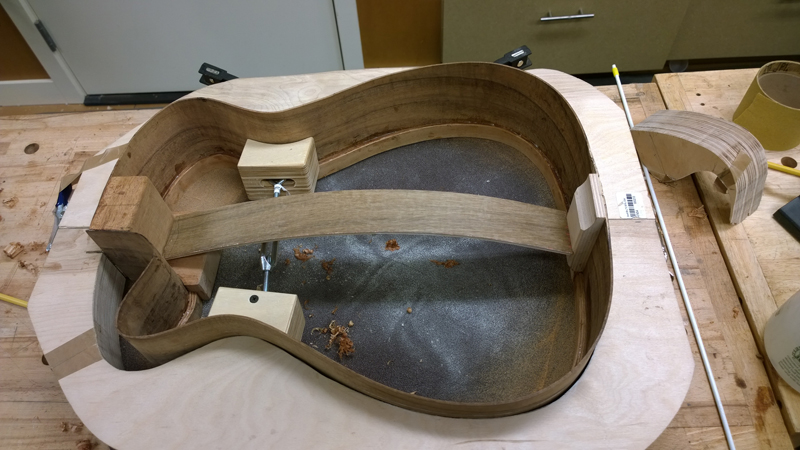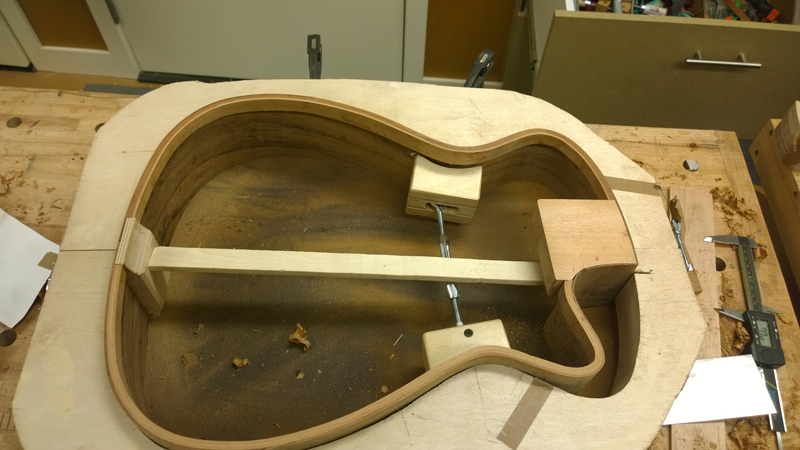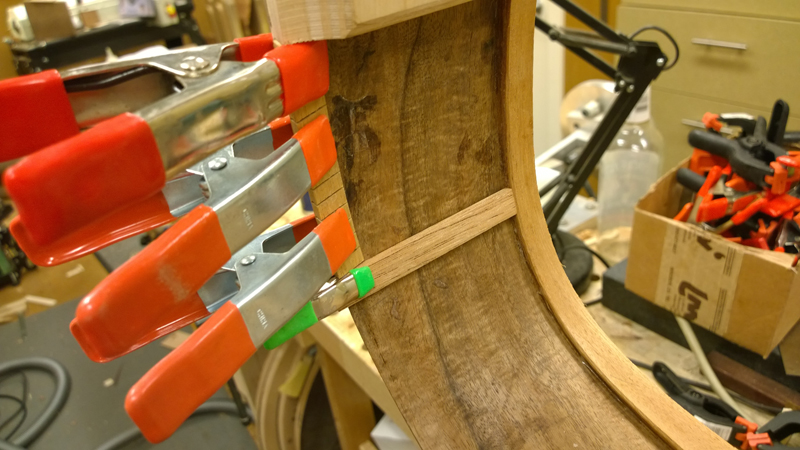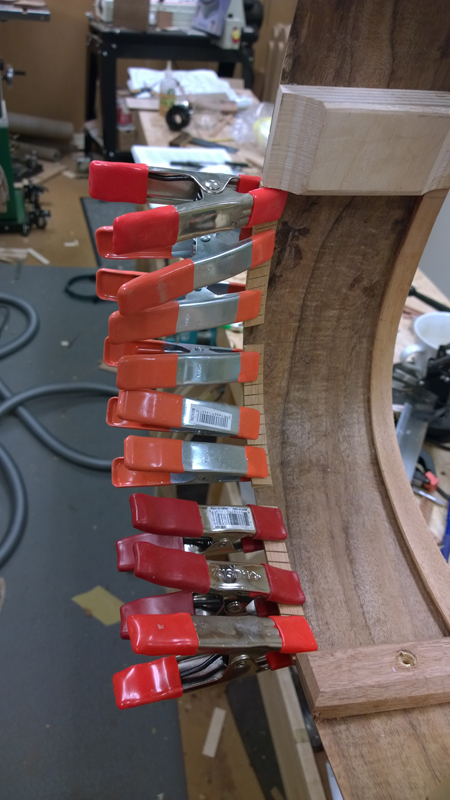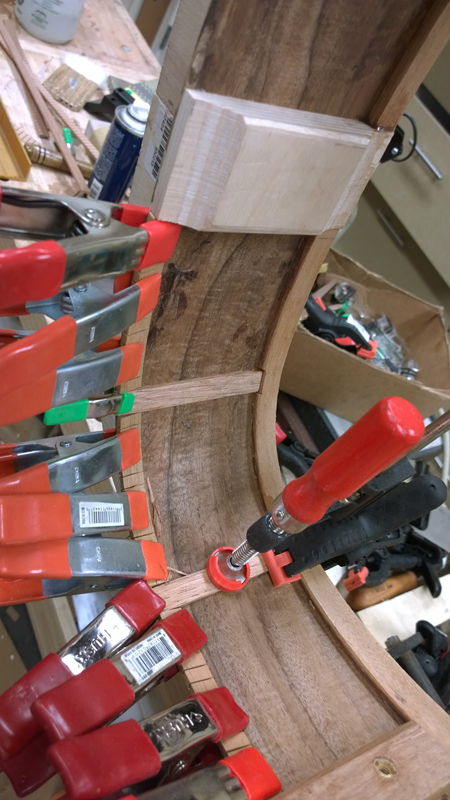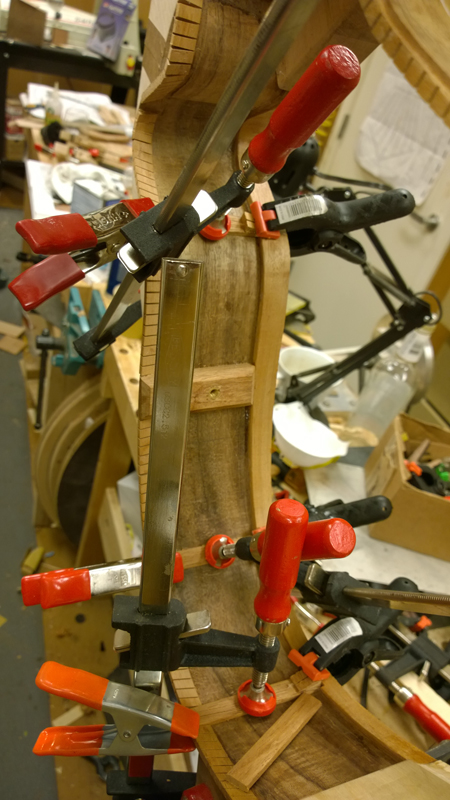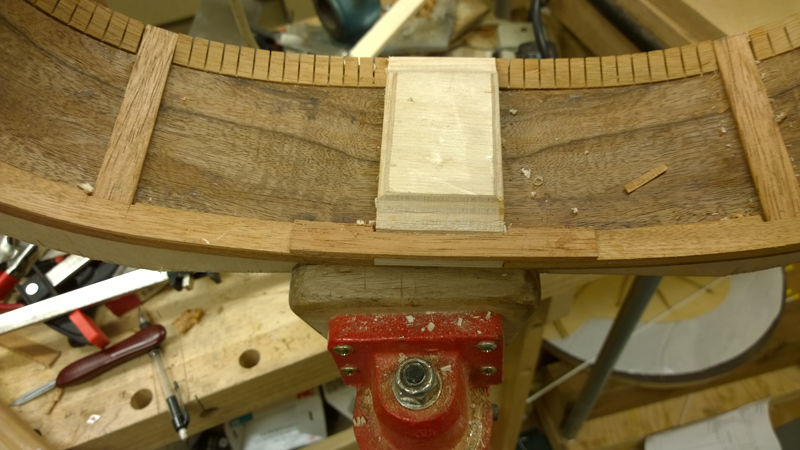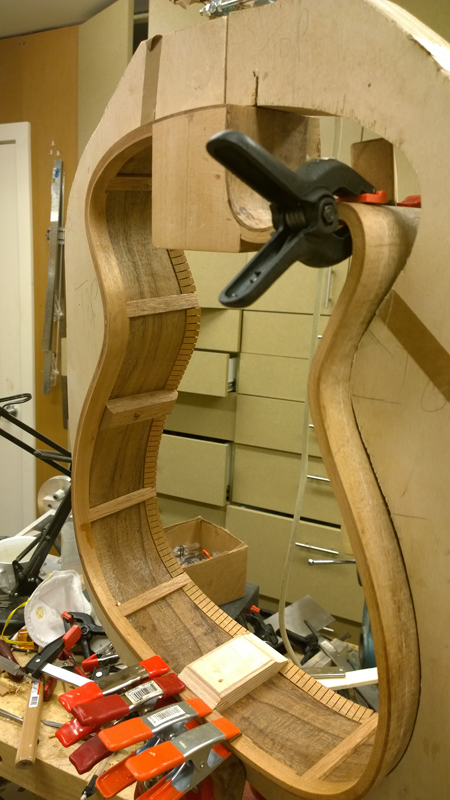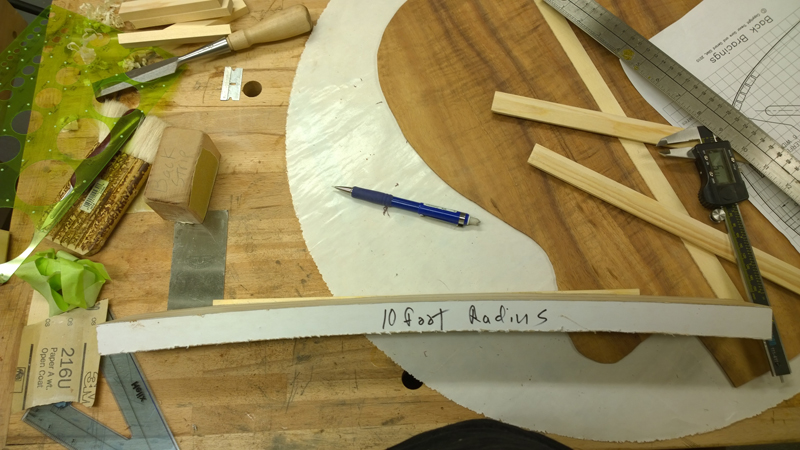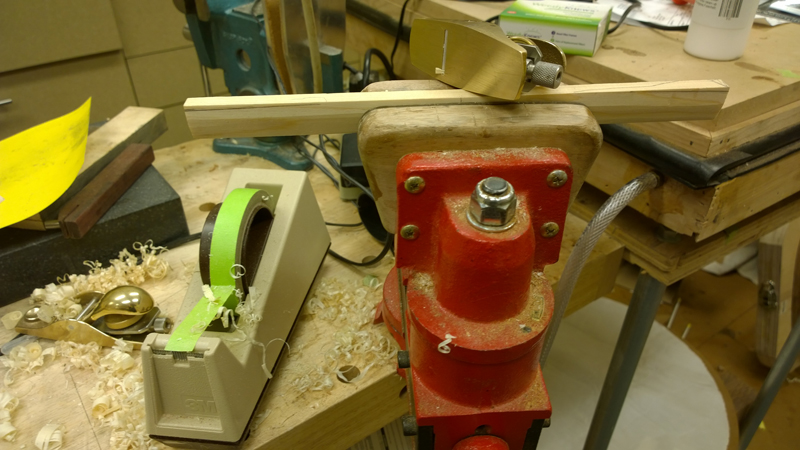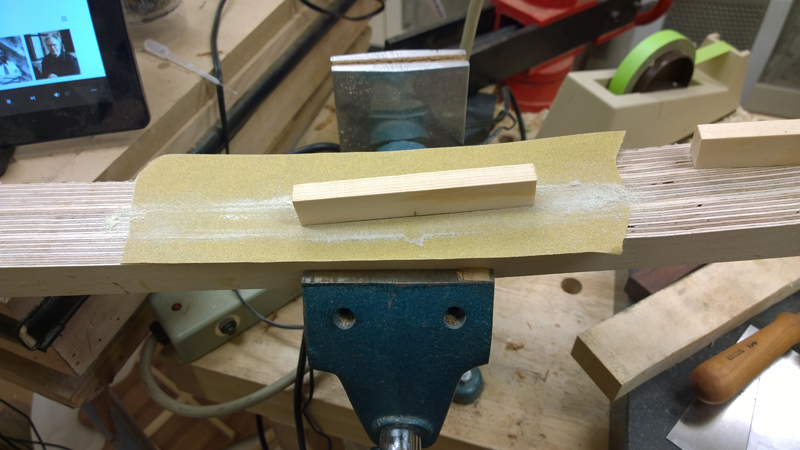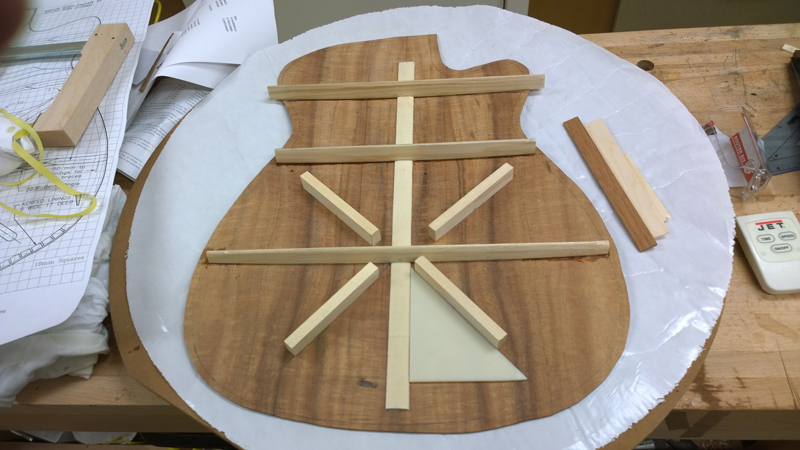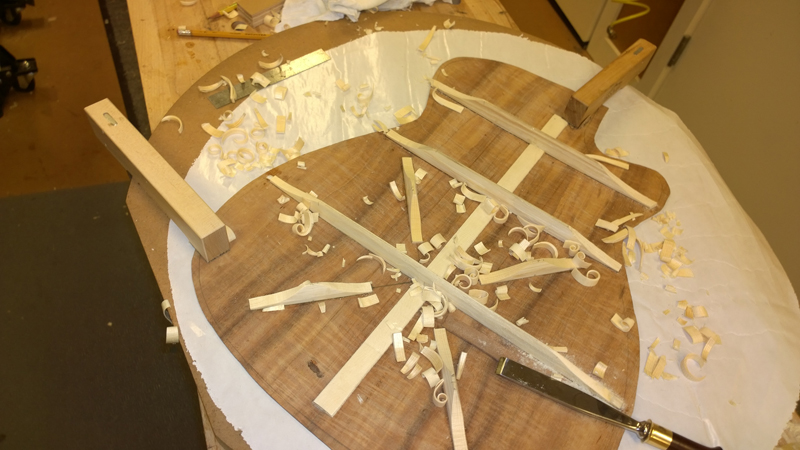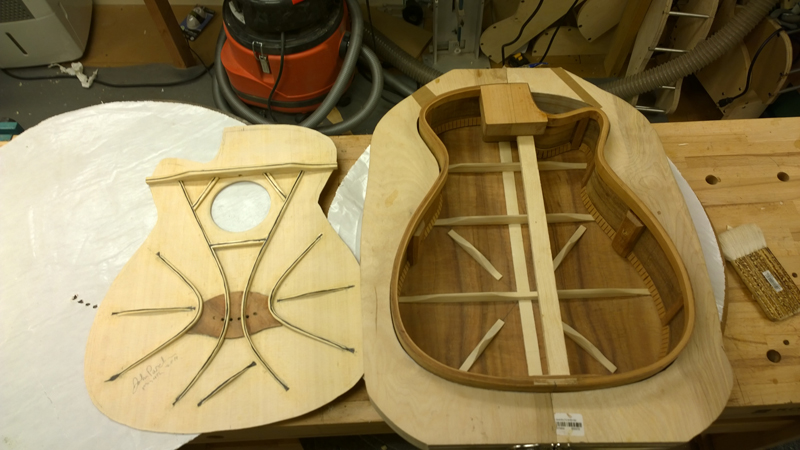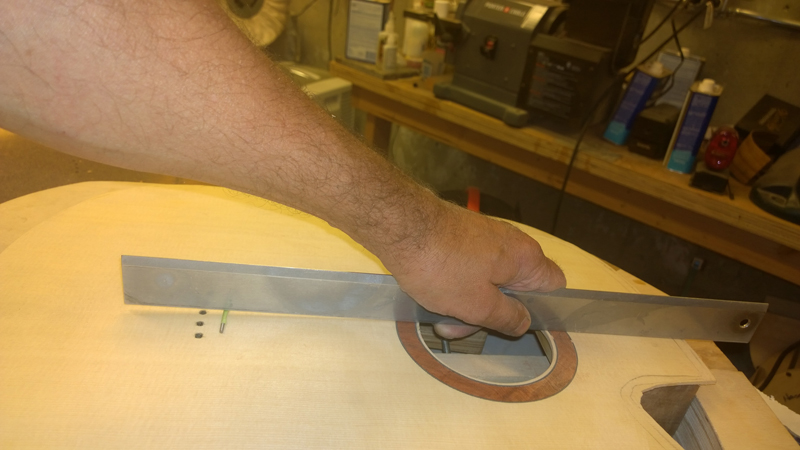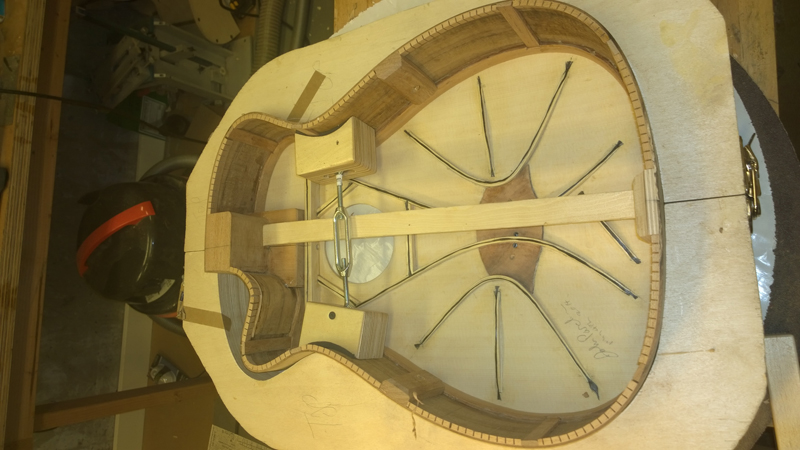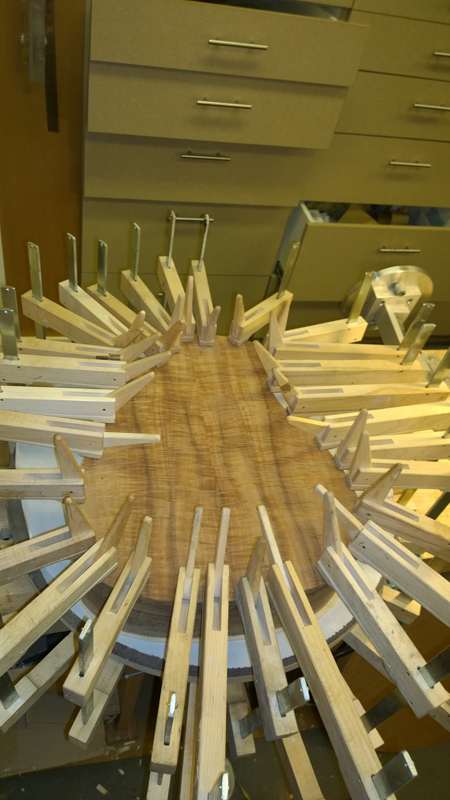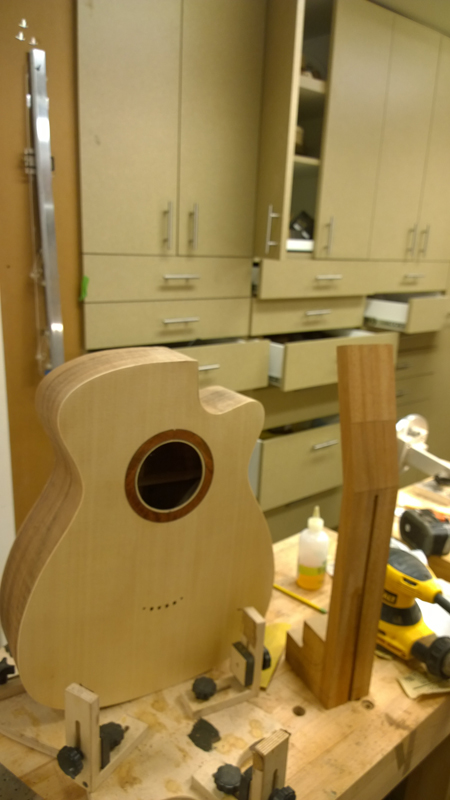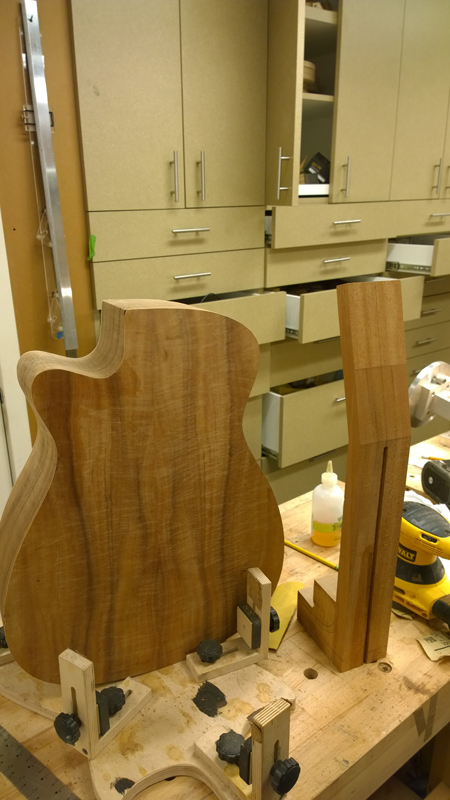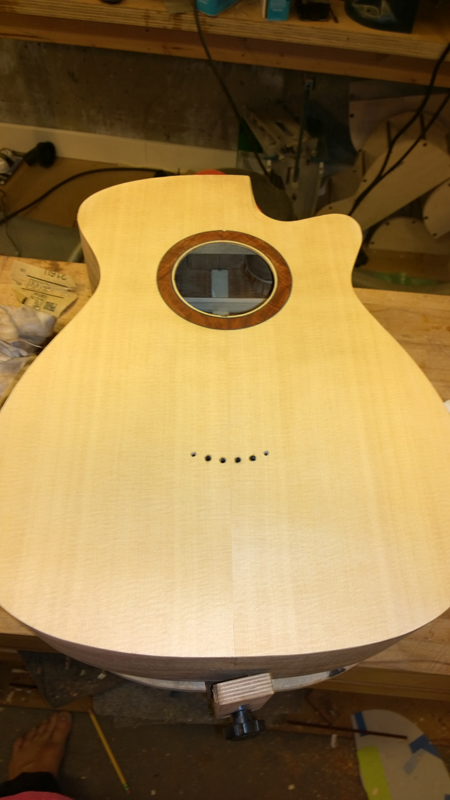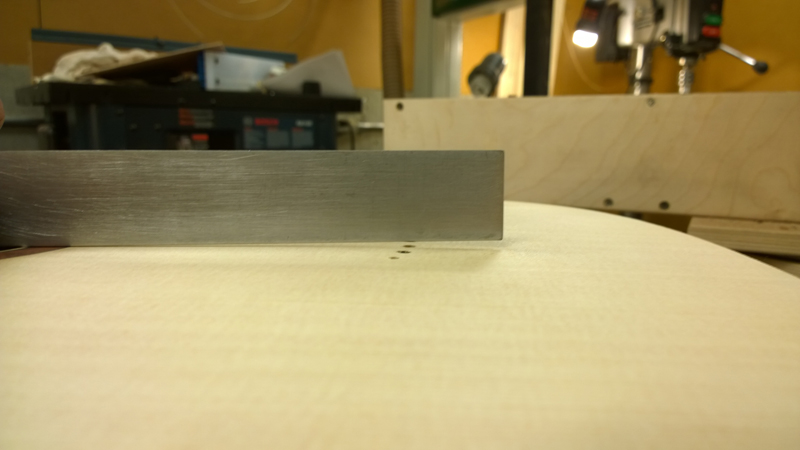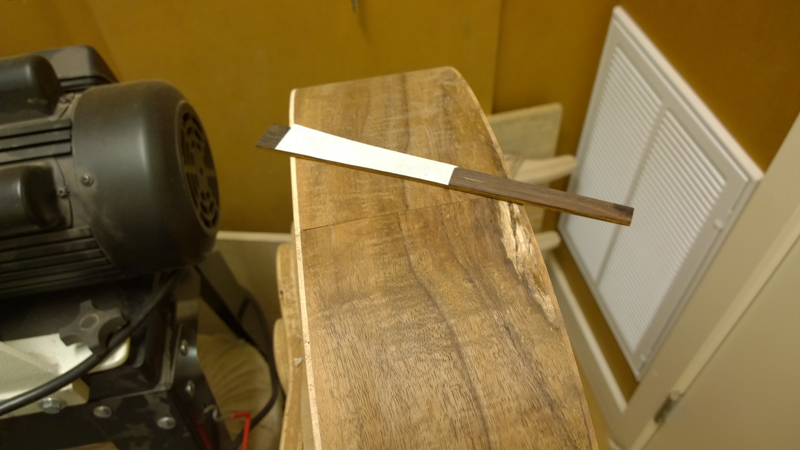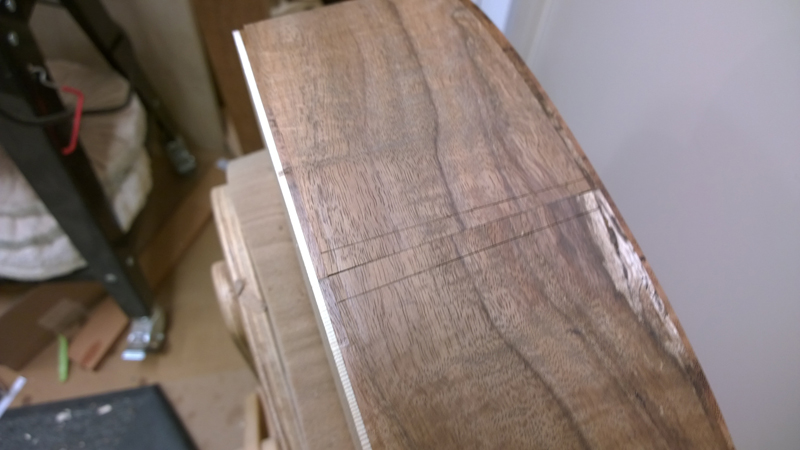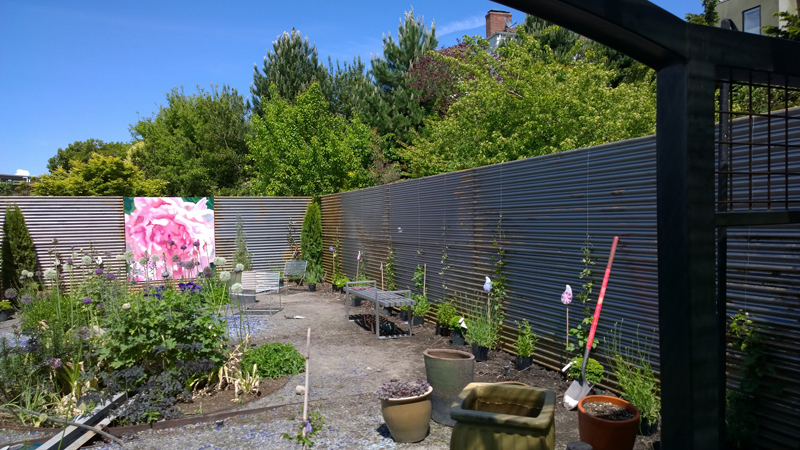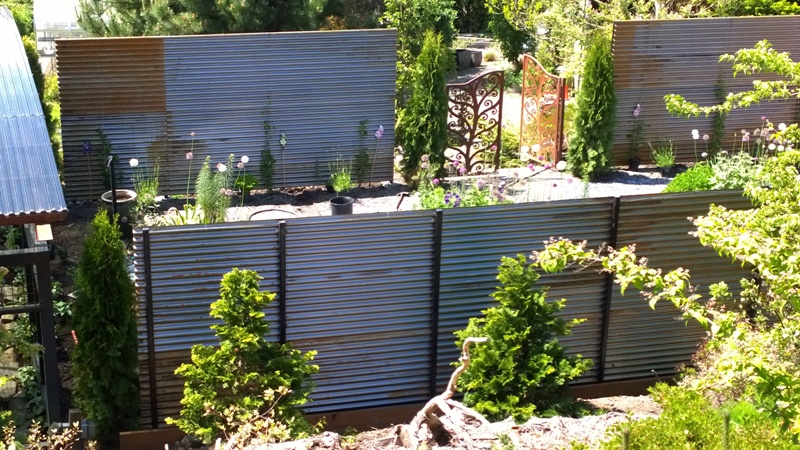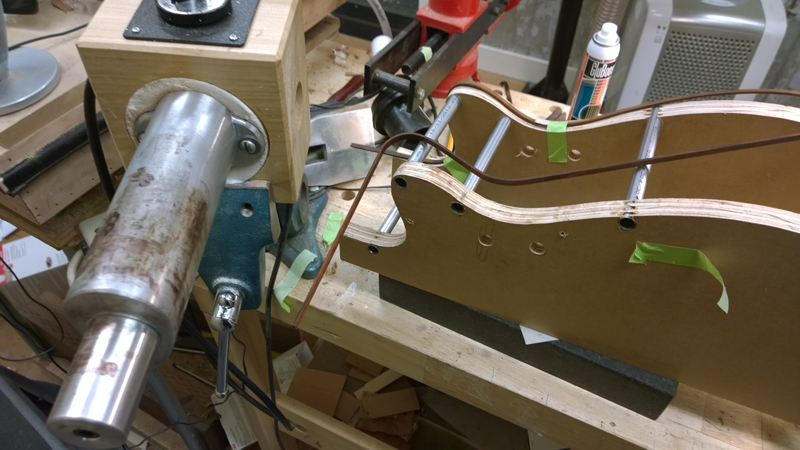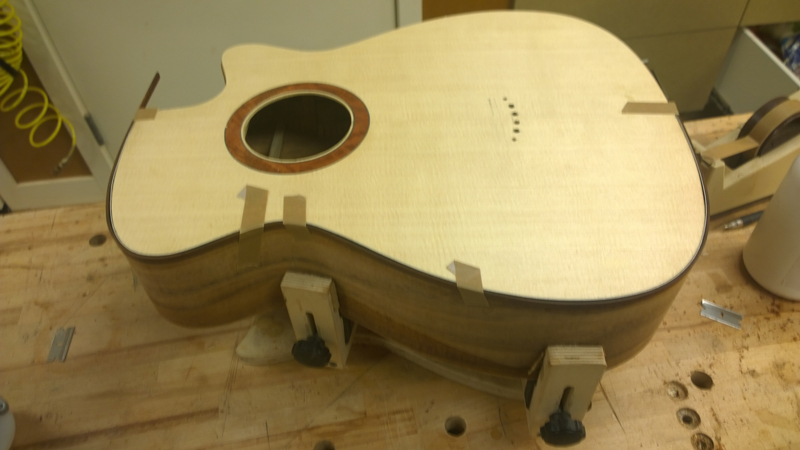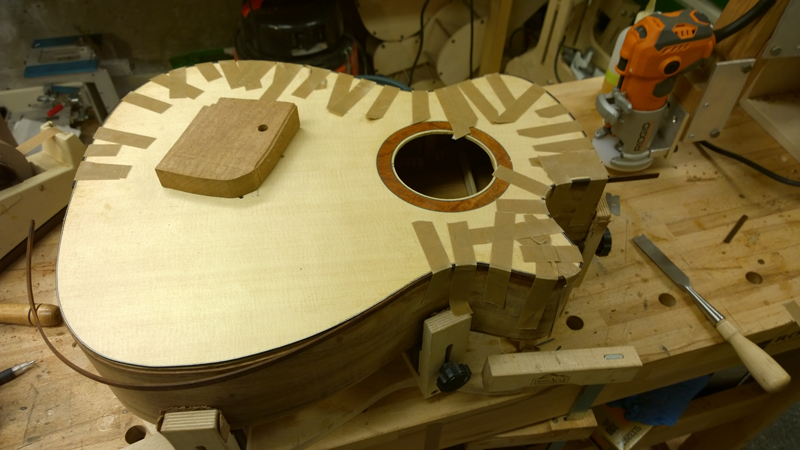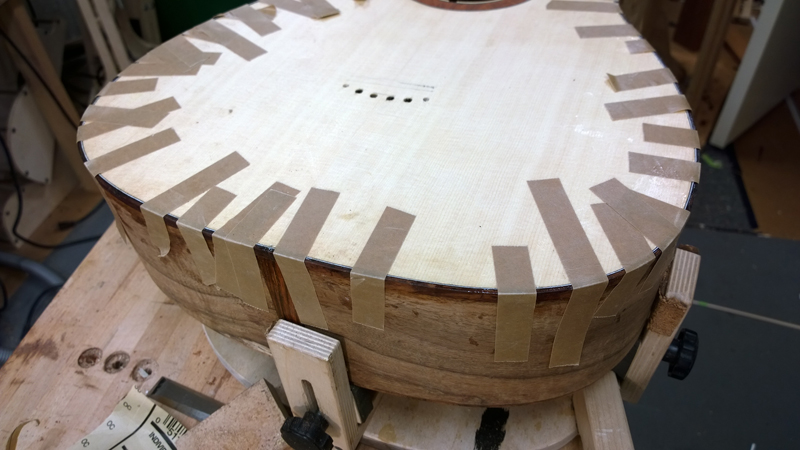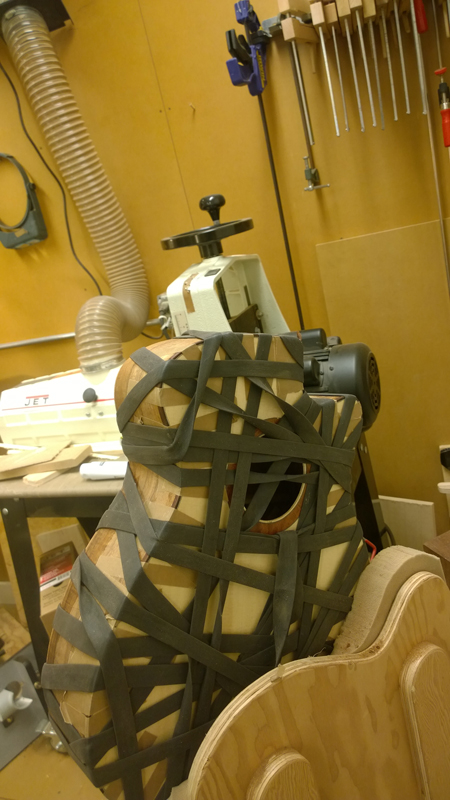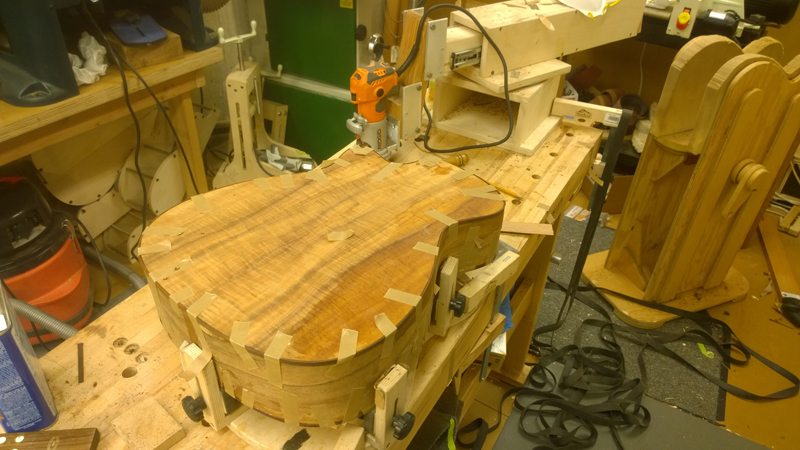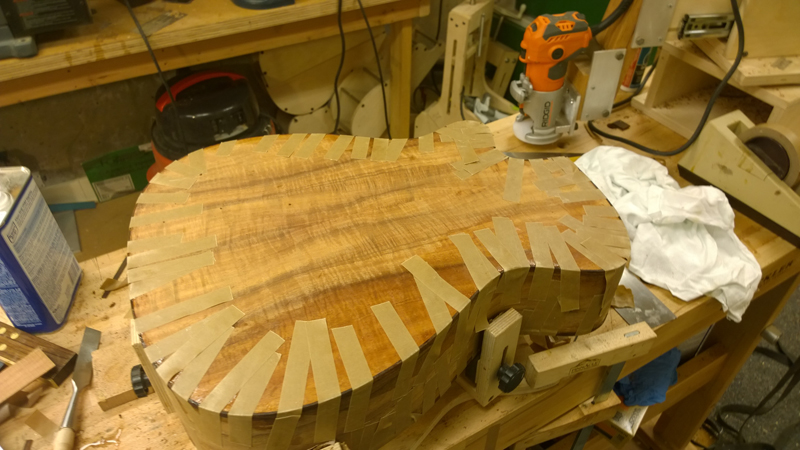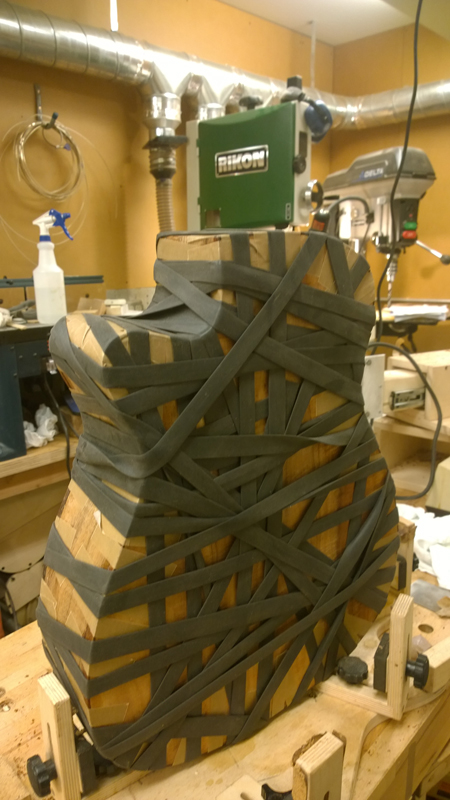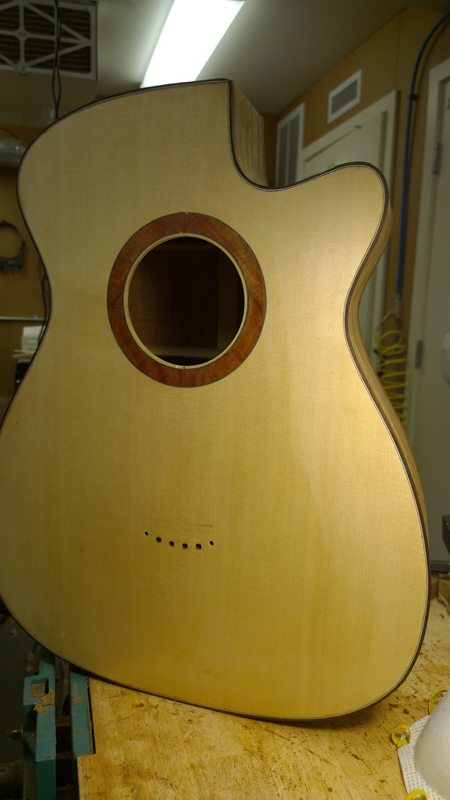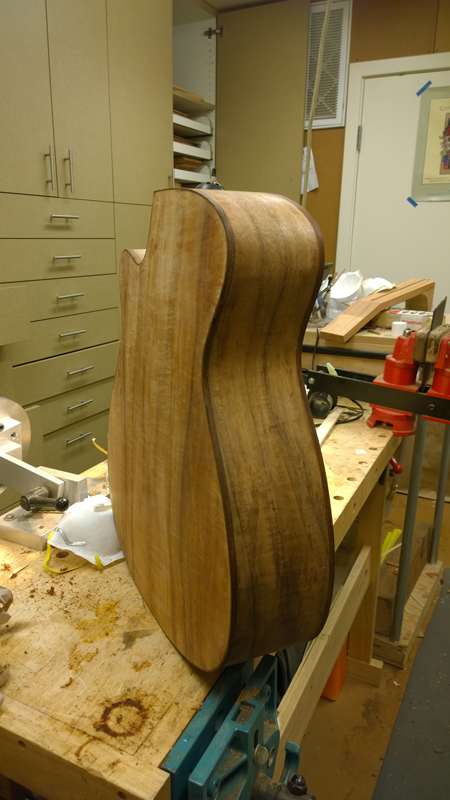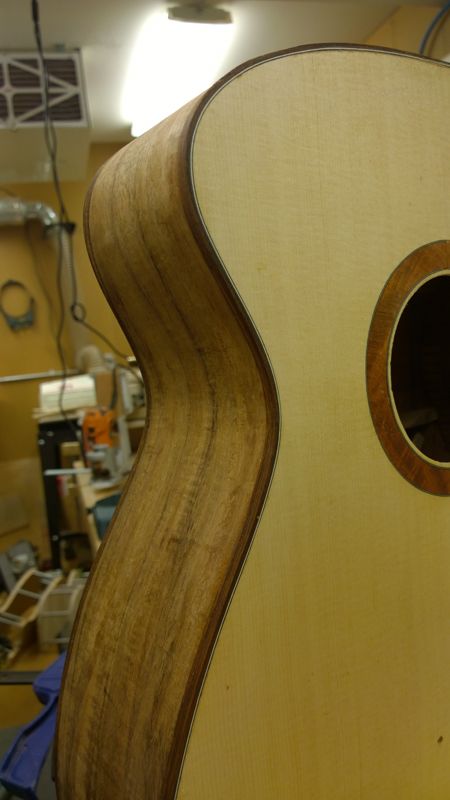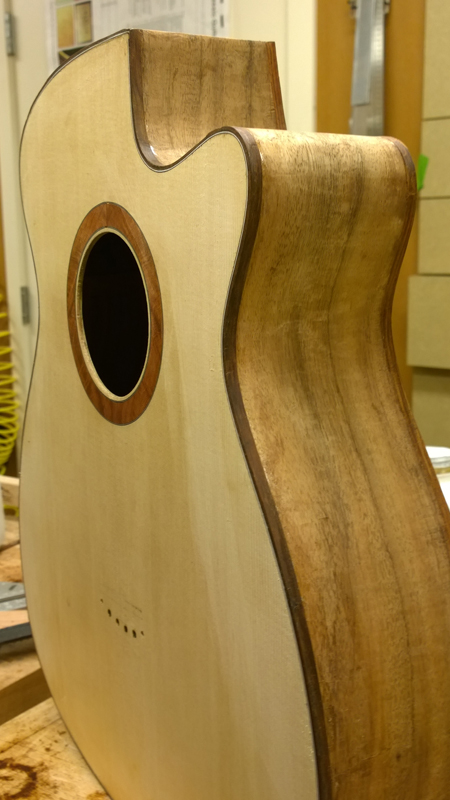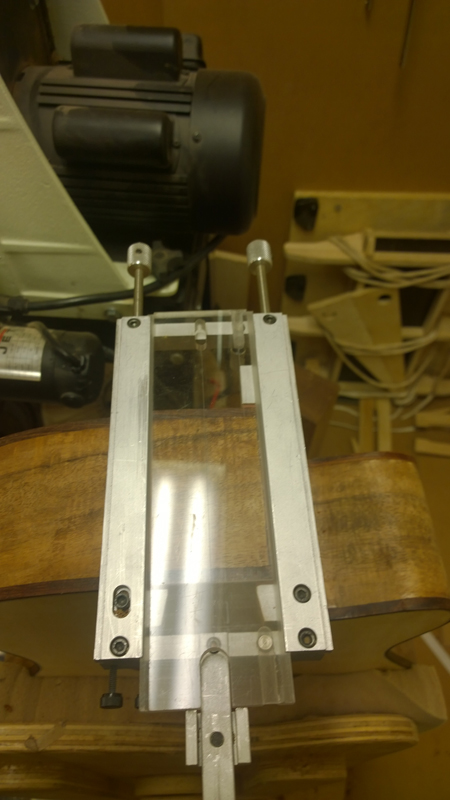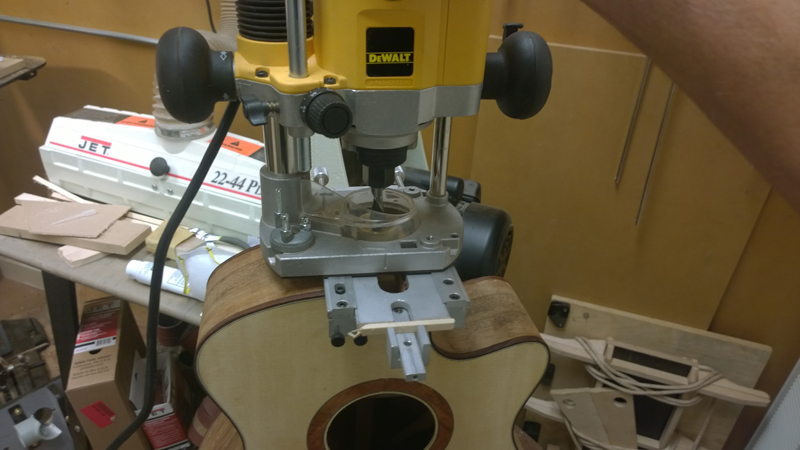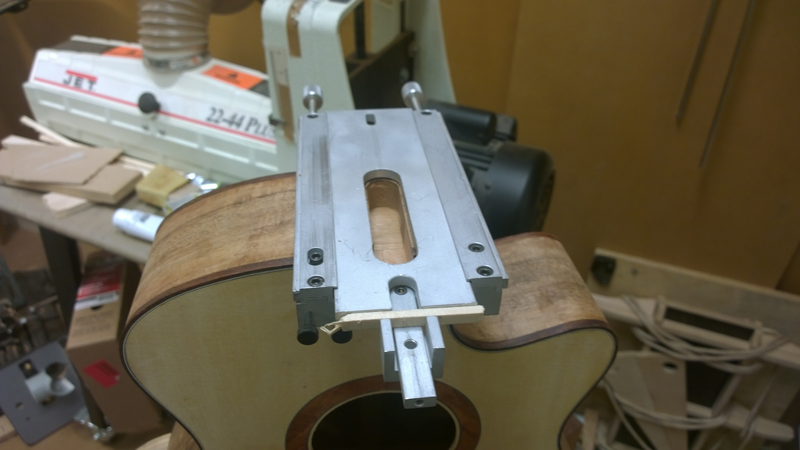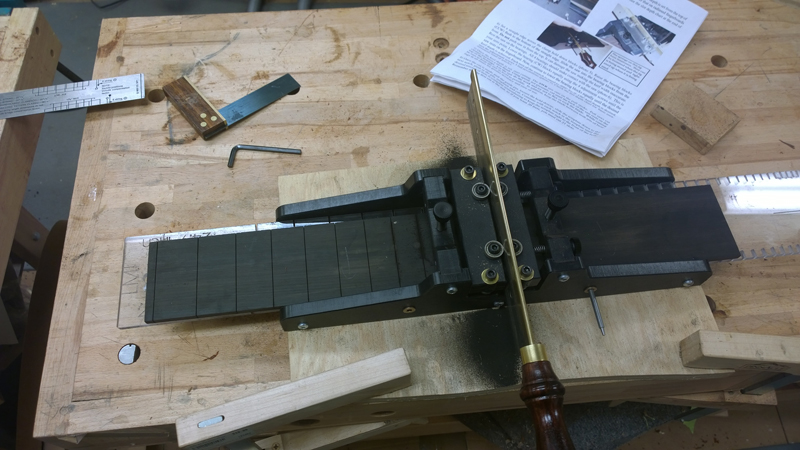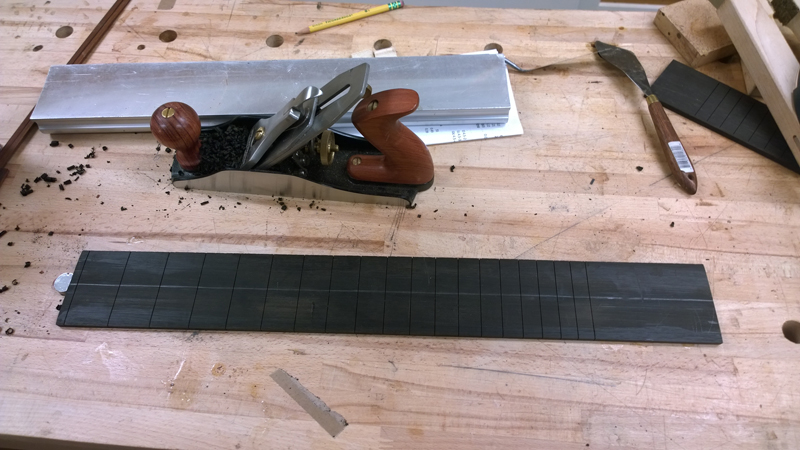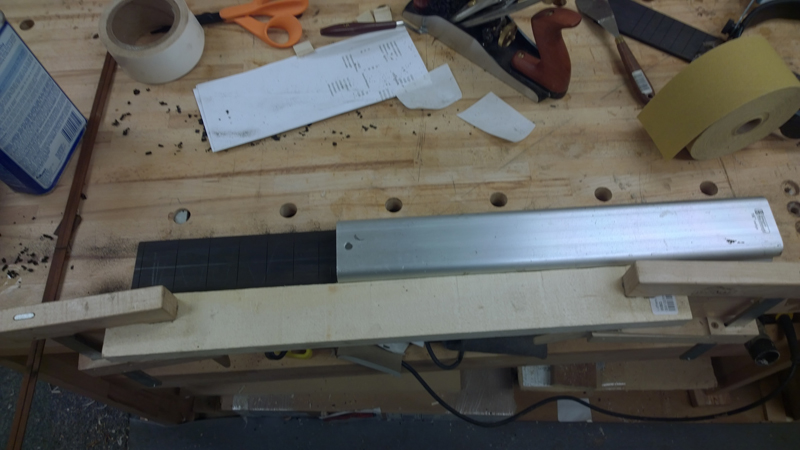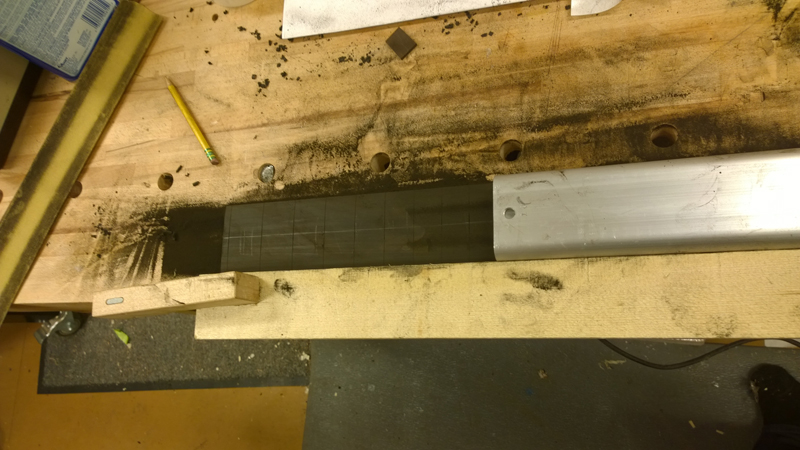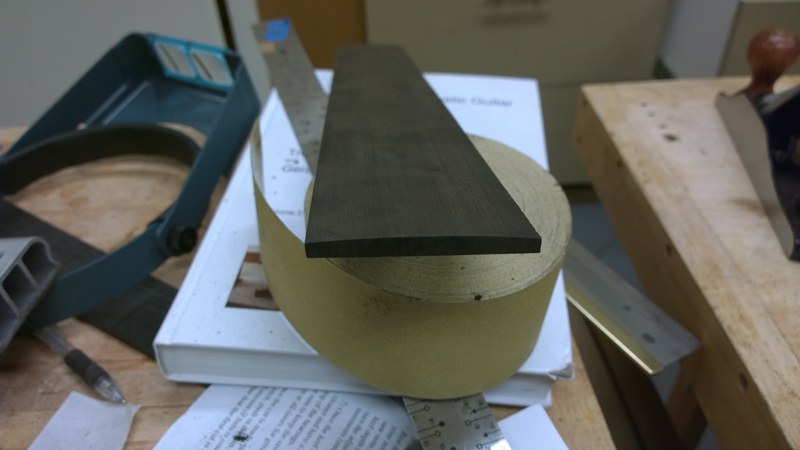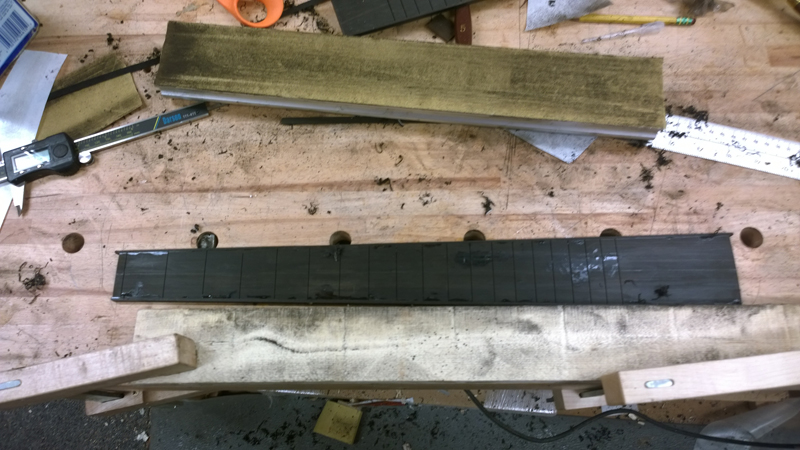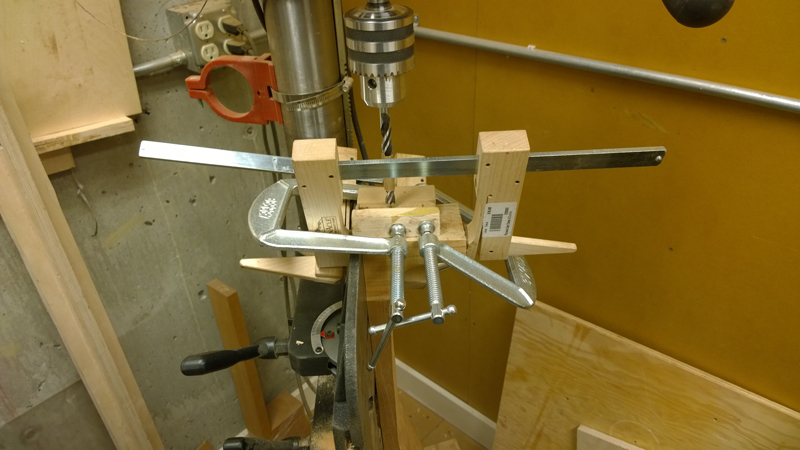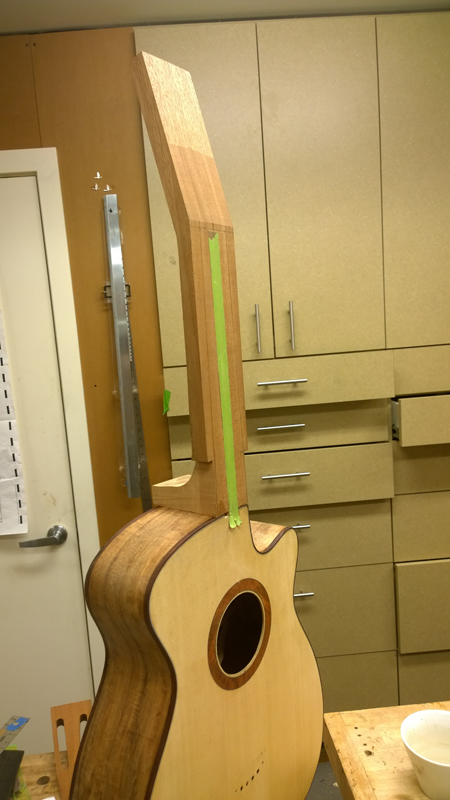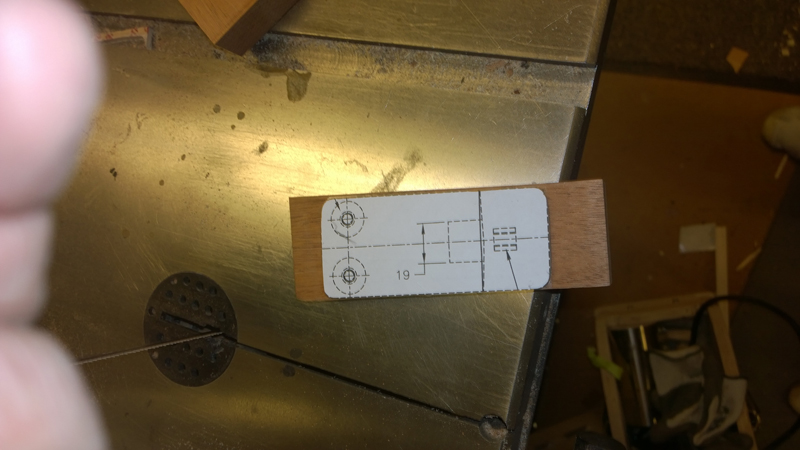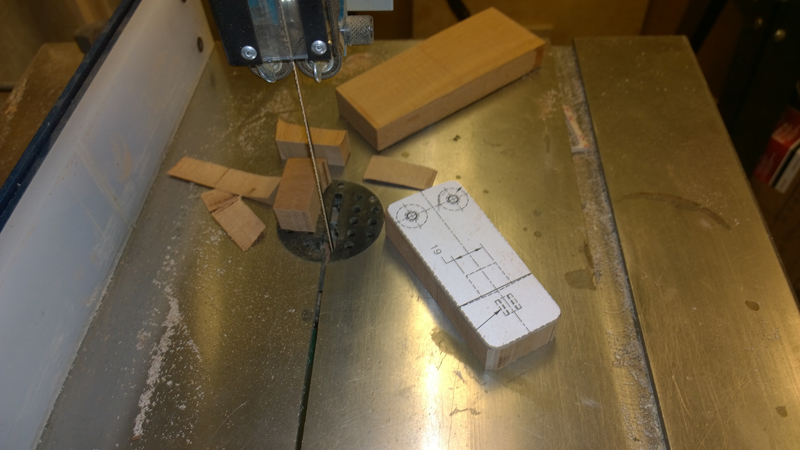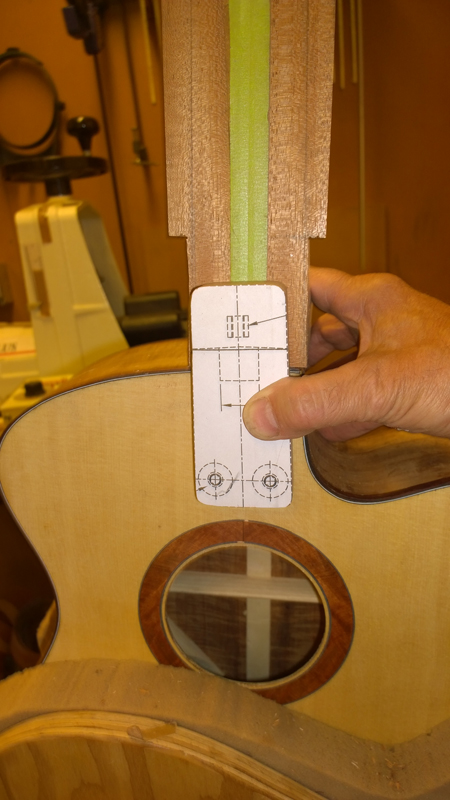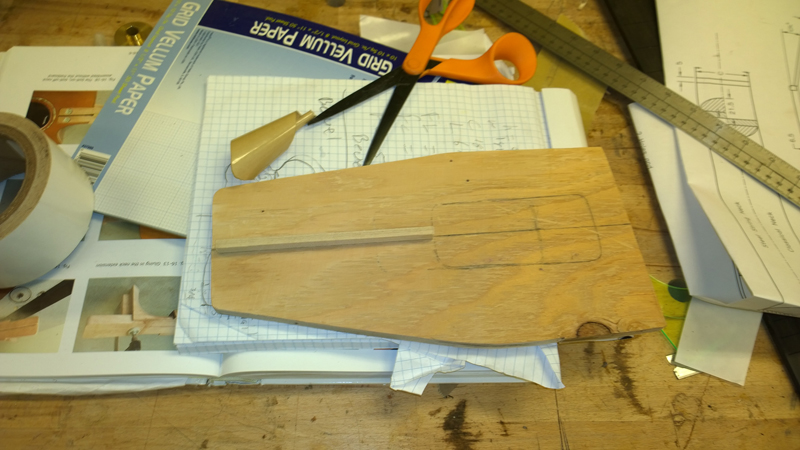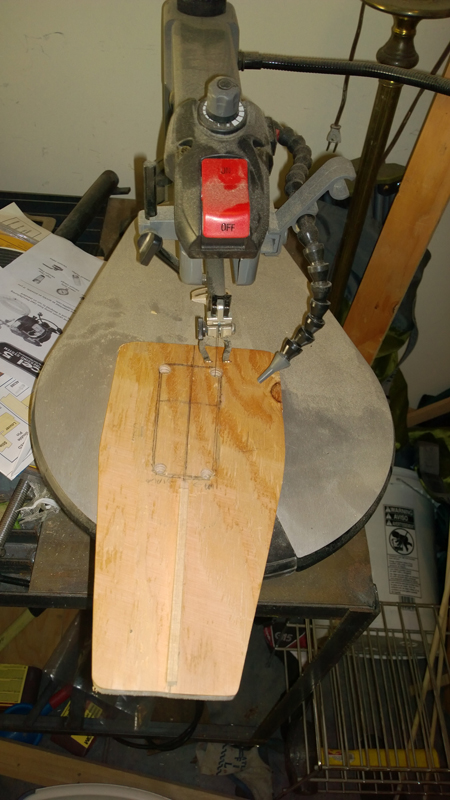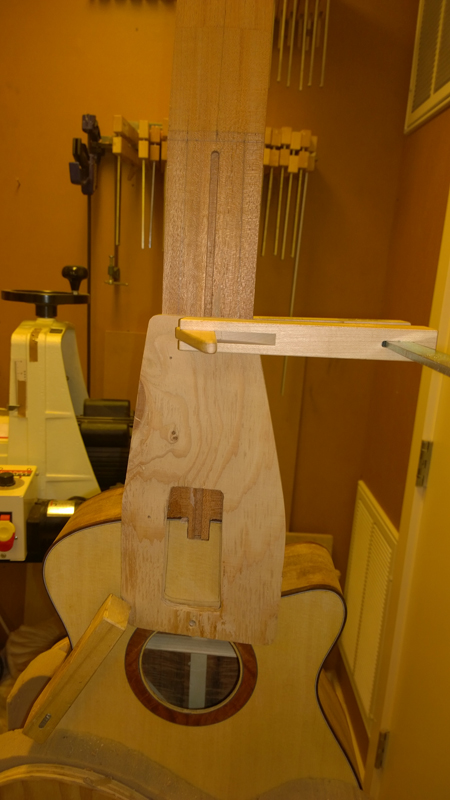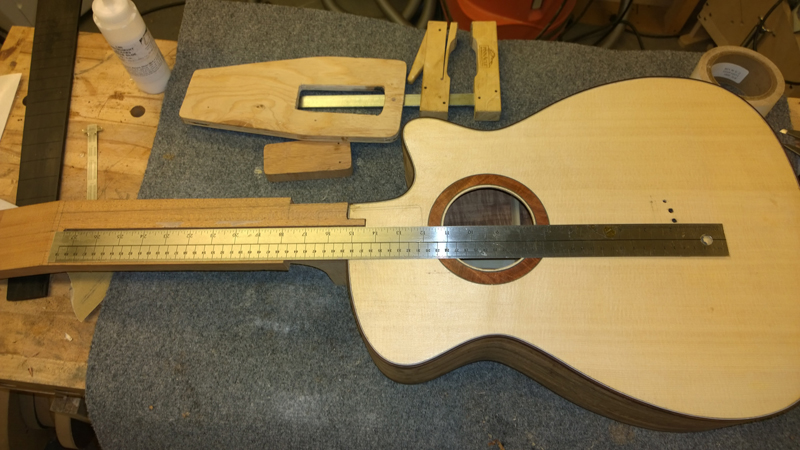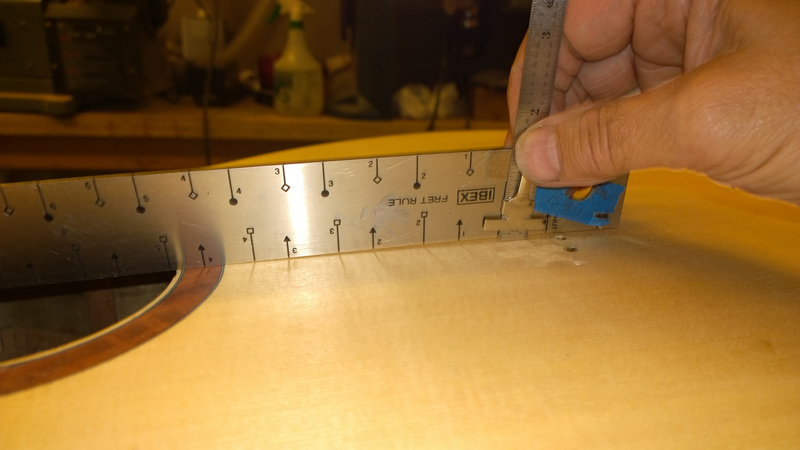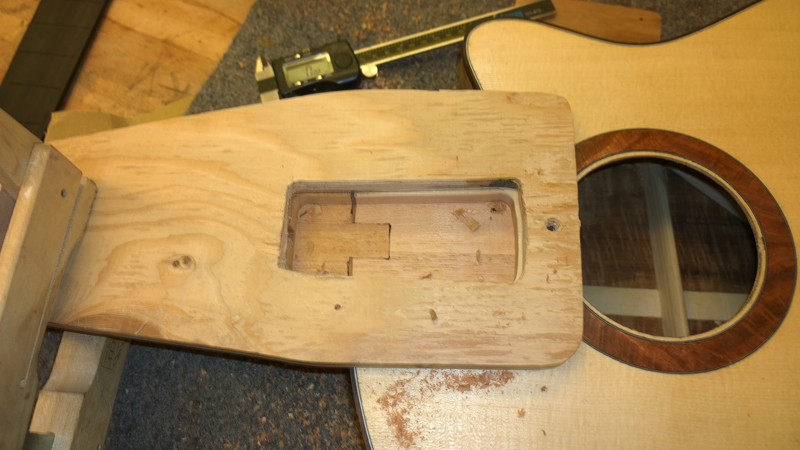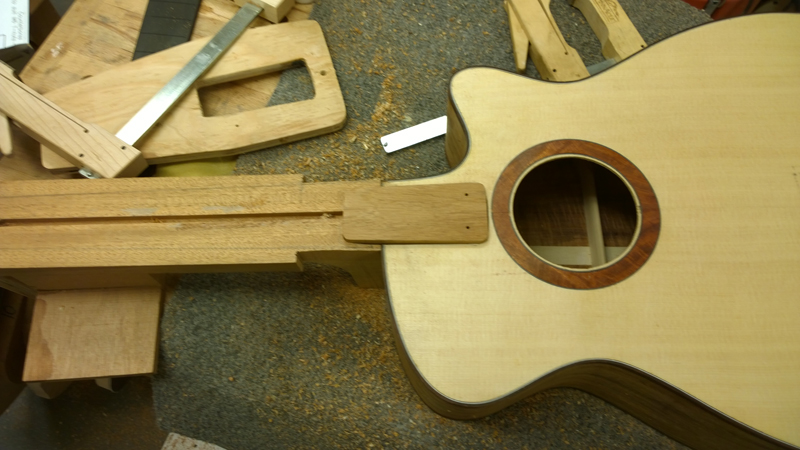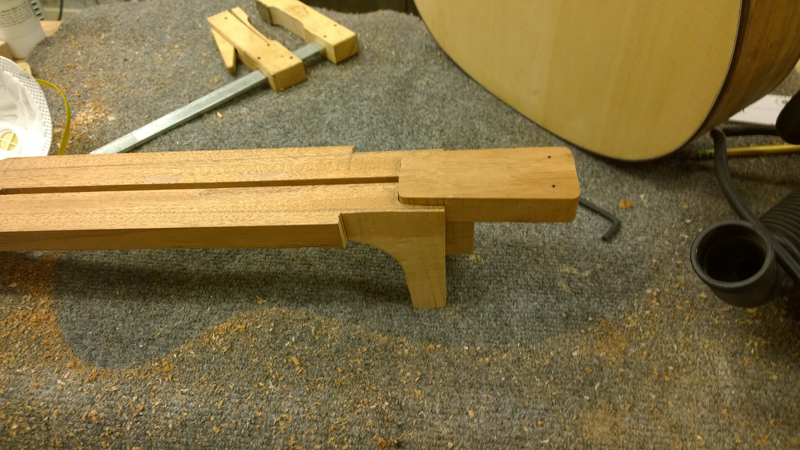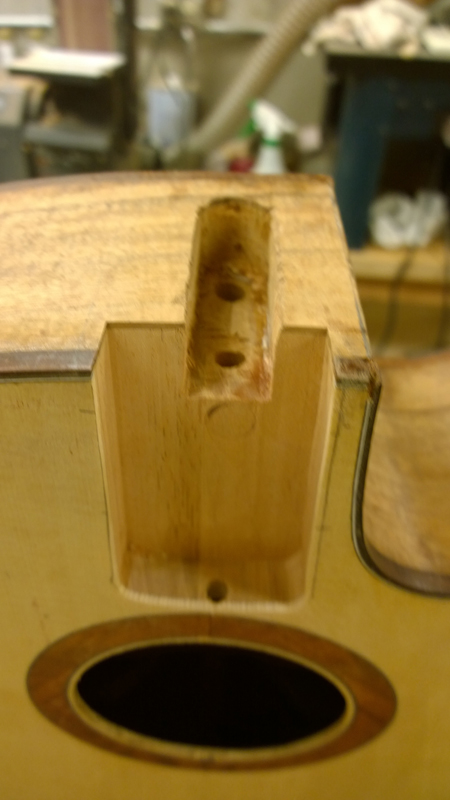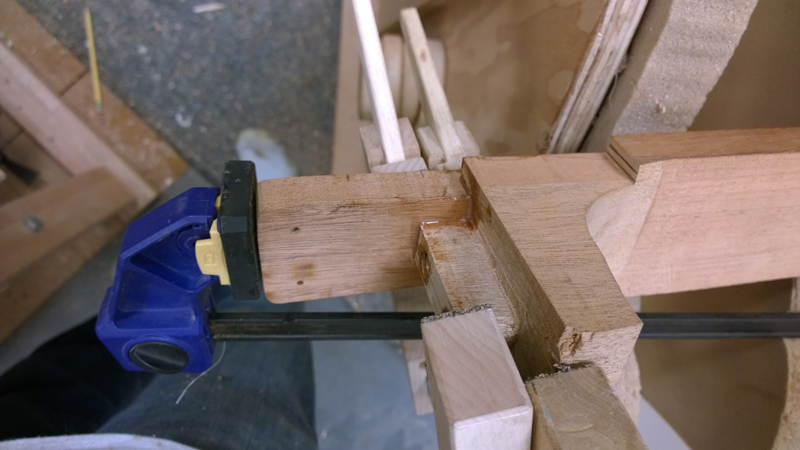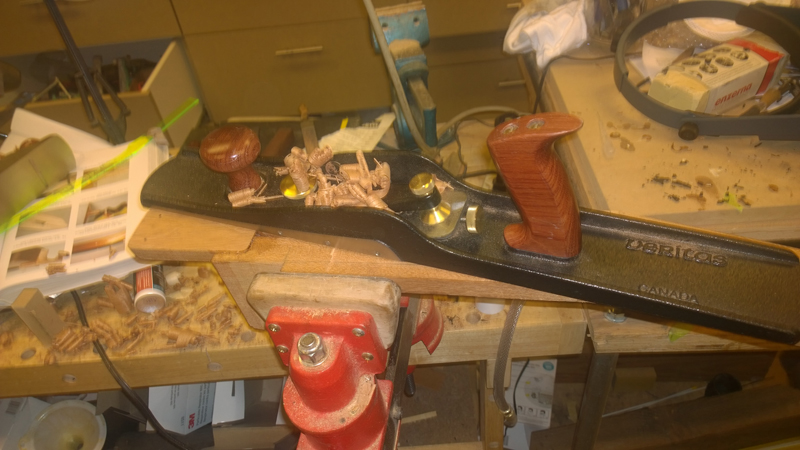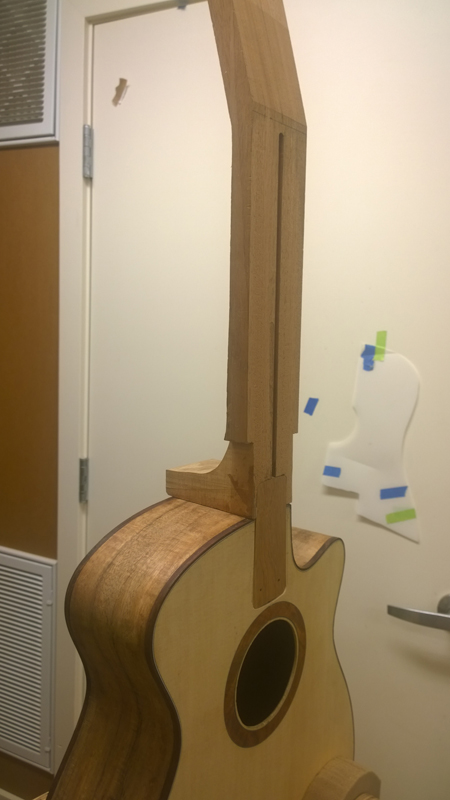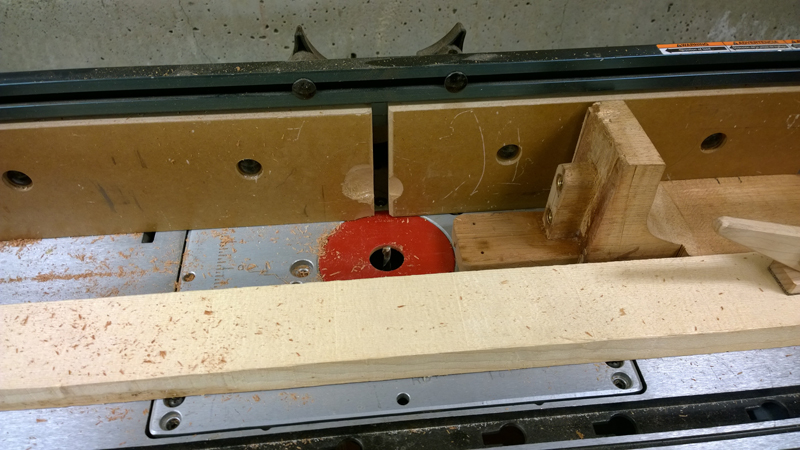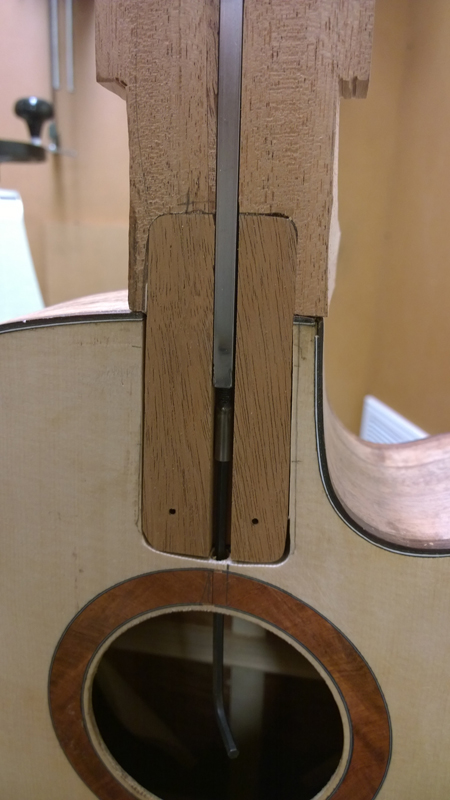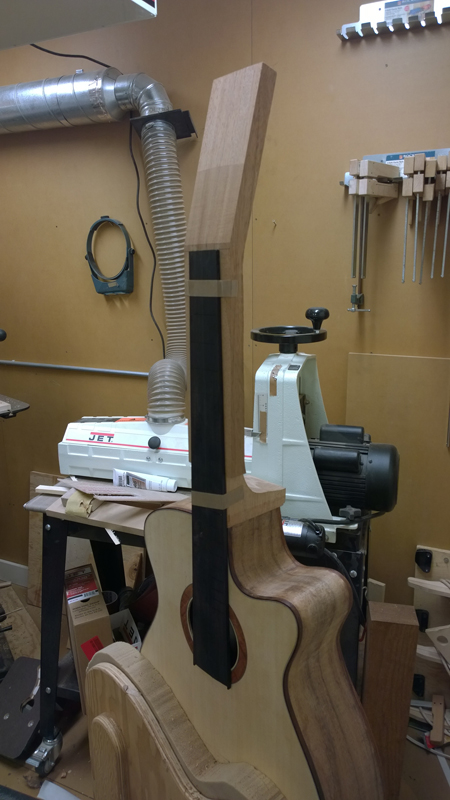Thanks John,
I started the head stock design to day ultimately making a mock up to test my layout. The book suggests a tuner layout that allows a straight run across the nut to the tuner post. Not having the break at the nut, while intonation by the nut will be the same, will have the feel of a longer string in terms of bends and the feel fretting them.
To properly layout the tuners I first needed to determine the string spacing at the nut, then I could layout the tuners so that they fit on the peg board and are positioned for the straight run.
I like to have my spaces relatively even as opposed to the string centers. In the past I have used the thickness of the strings to figure out the placement. The book had a simpler method that looks nearly as good. (I used it on my last guitar as well)
I first mark out E strings 3mm in on the bass side, 4mm in on the treble side I measure the distance in between. For this guitar is was 36.75 mm.
.
The strings are spaced .1mm farther apart as it moves from treble to bass. I mark the spaces A, B ,C, D, E, where A is between sting 1 & 2 and E is between 5& 6. So:
A = ((distance between strings 1 and 6) - 1 mm) / 5 | (36.75 mm - 1) / 5 = 7.15mm
B = A + .1mm = 7.25mm
C= A + .2mm = 7.35mm
D = A + .3mm = 7.45mm
E = A + .4mm = 7.55mm
Instead of measuring and laying out the spaces I calculated all the string positions starting with high E string as 0. This avoids accumulated layout errors.
High E = 0. B=7.15, G = 14.35, D = 21.74, A = 29.2, E = 36.75 mm
To design the shape. I started with my 1 3/4 nut width and use some of the base measurements for the curve to the nut from Trevor Gore's design. I drew in the string spacing and extended the lines up into the head stock. For each string I placed the center of the post hole 3 mm from the string lines away from the center . ( I made the mistake on my bass putting the posts on the string line.)
I used Tervor's plan in the book to space the tuners from the nut. With the tuner posts marked I made a dot up and out to mark where I wanted the knob shaft to hit the body.
I drew in a rough placement for my logo and then used a french curve to hit my body intersection marks on each side and I went high enough to have room for the logo.
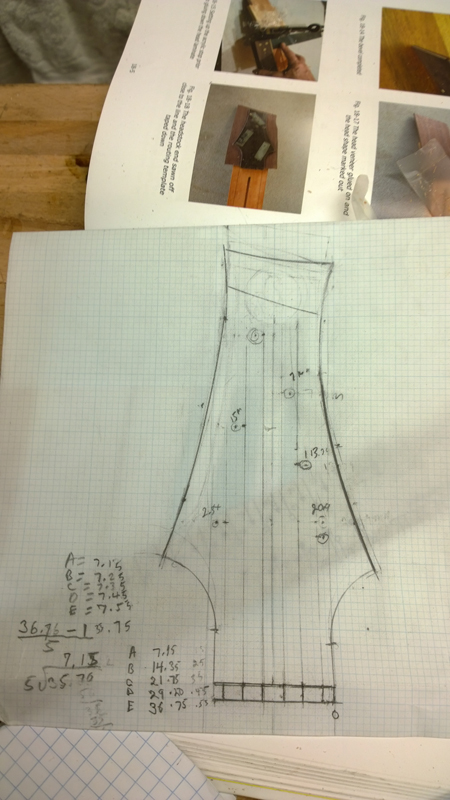
I copied my drawing and made a plastic template. Just to make sure the layout works I made a ply wood mark up.
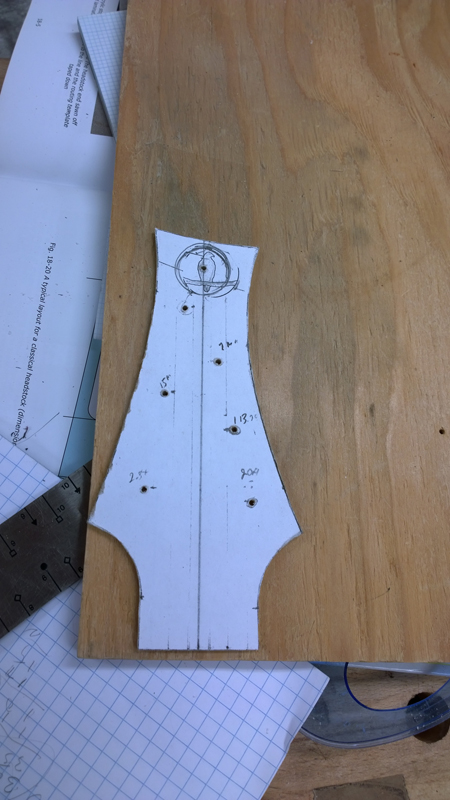
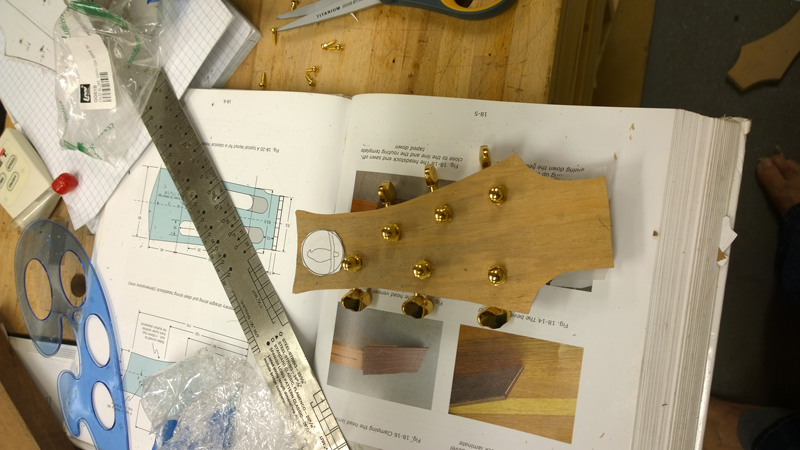
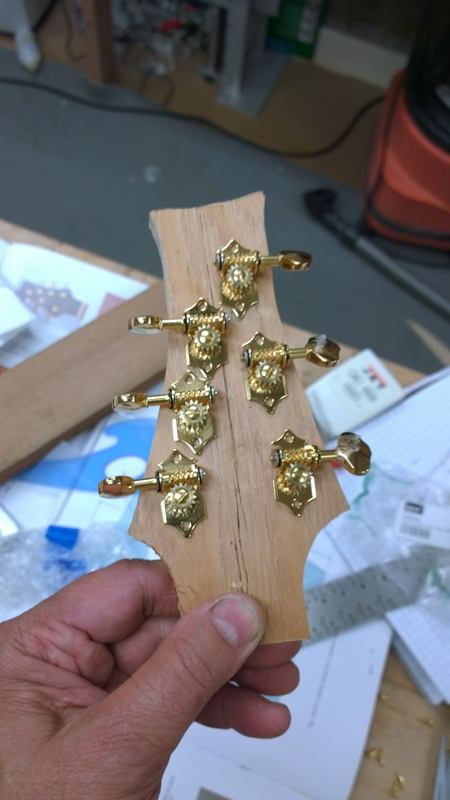
In the past I have been using paint cans and what not to transfer a curve to the bottom of the fret board. It finally dawned on me just to just use a compass. I have the center line so it is a lot easier.
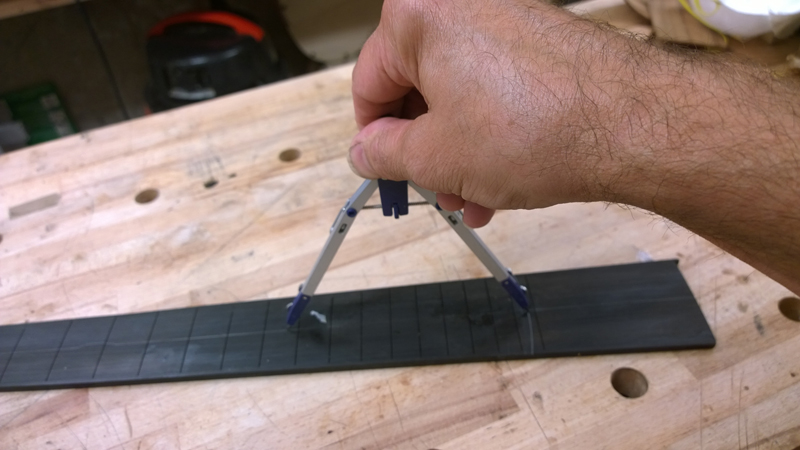
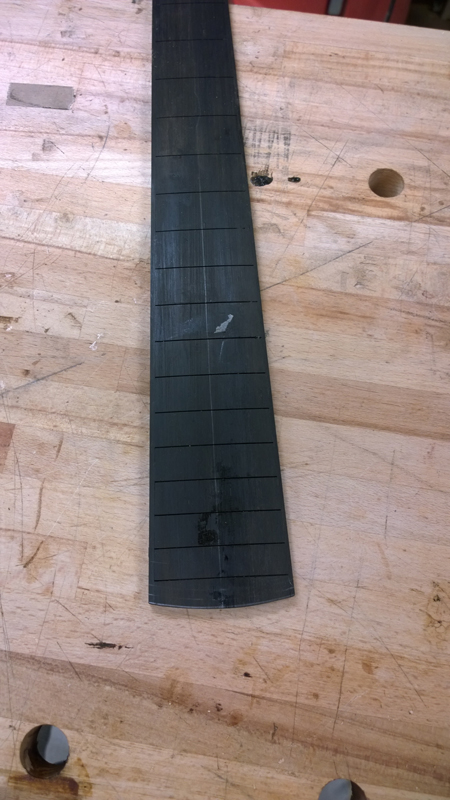
More neck work this weekend.
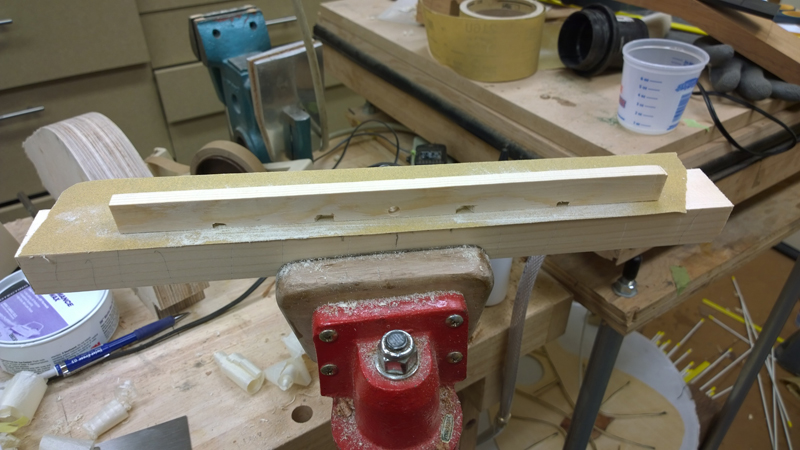
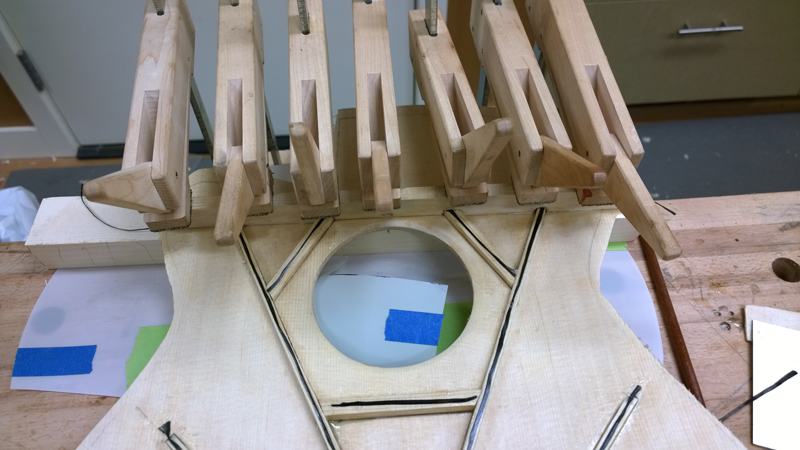


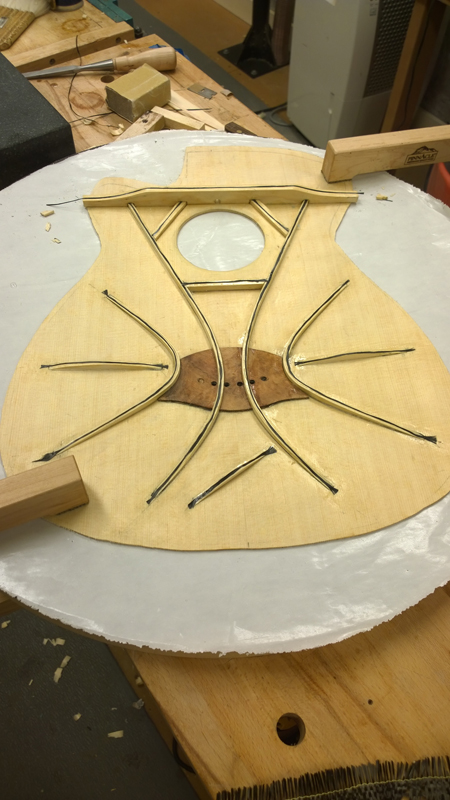


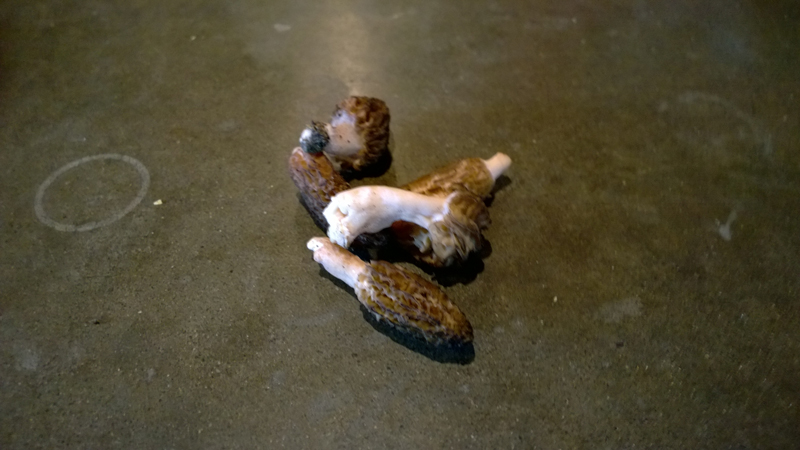
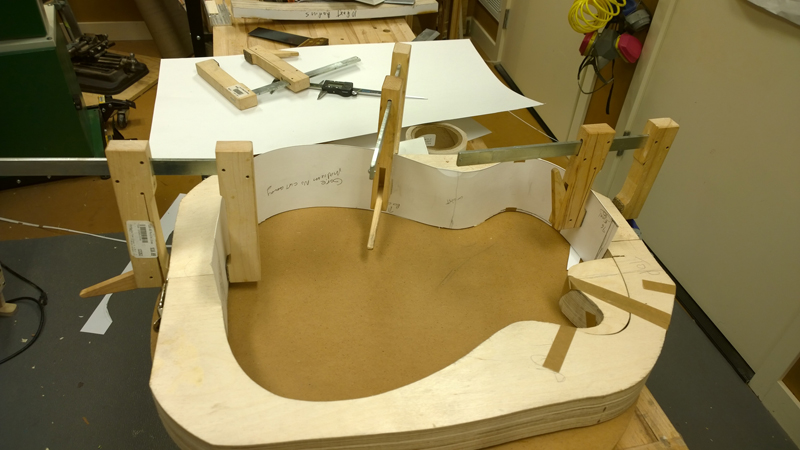
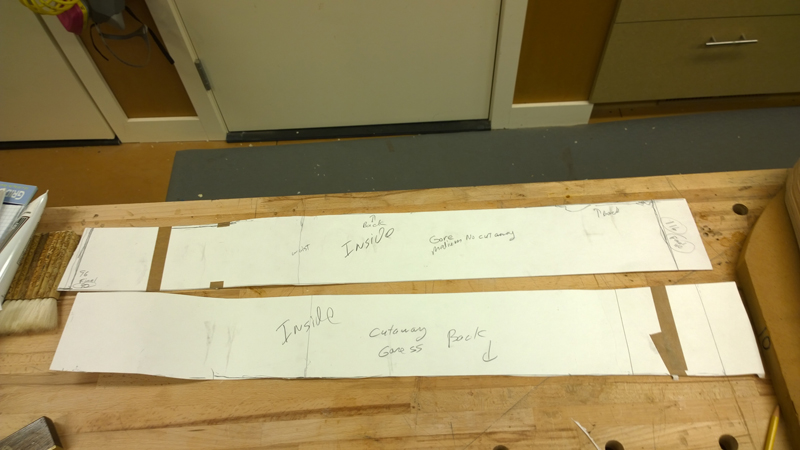
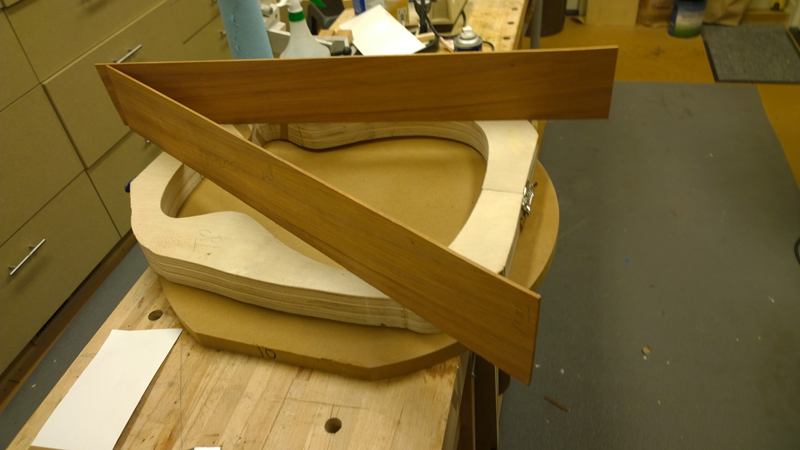
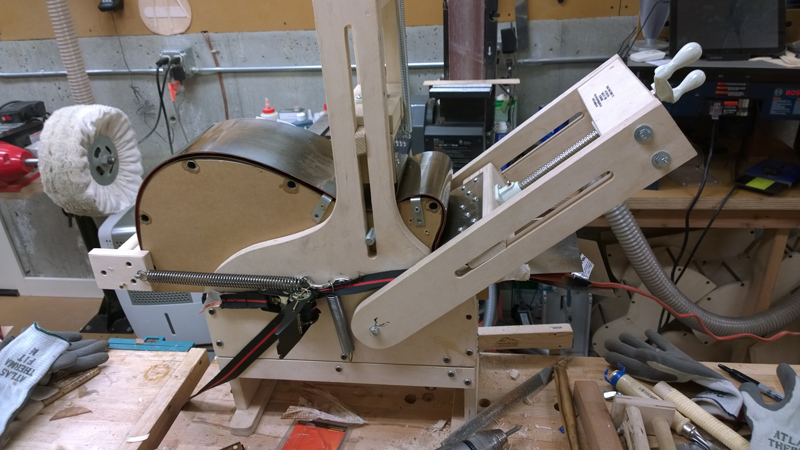
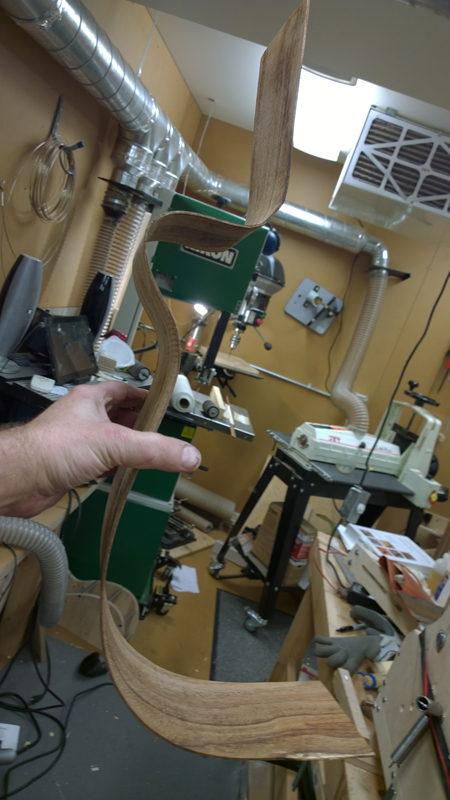 .
.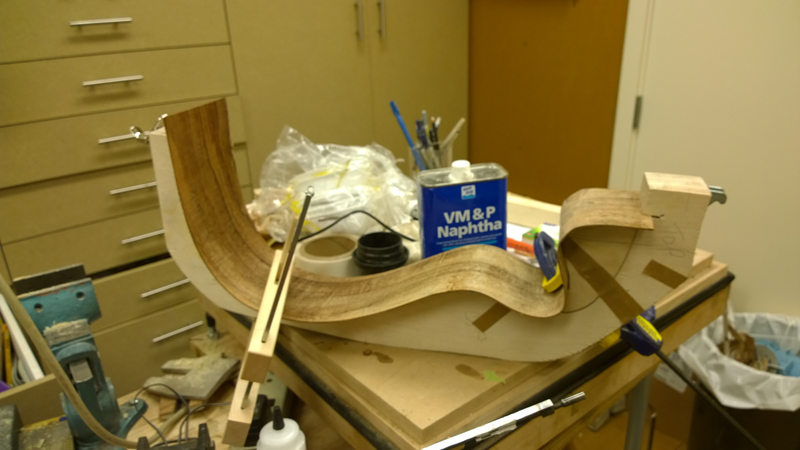 .
.